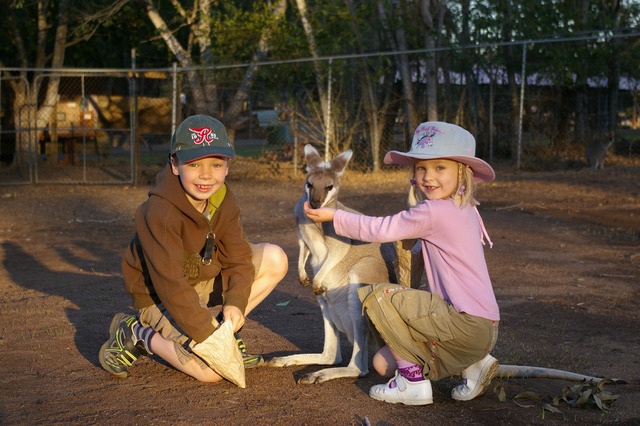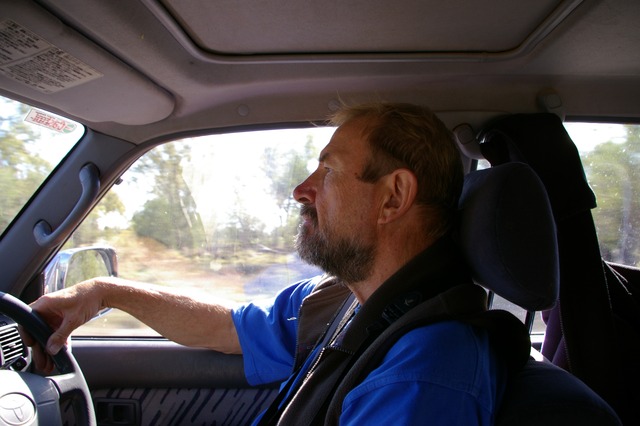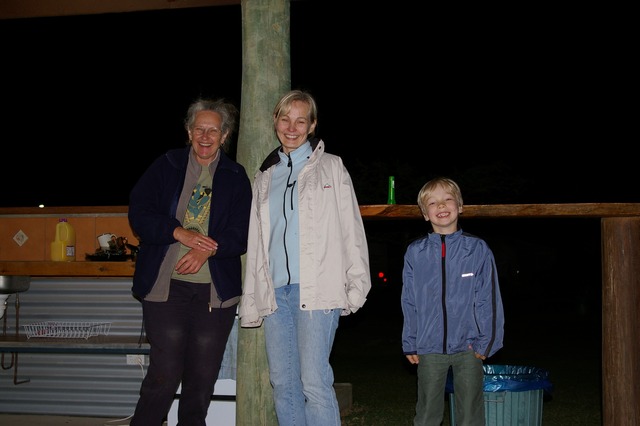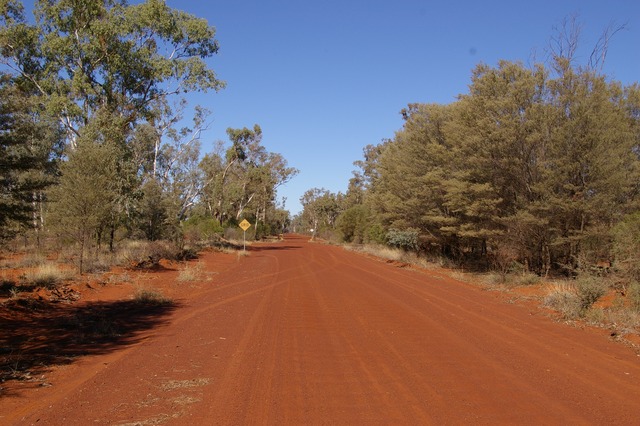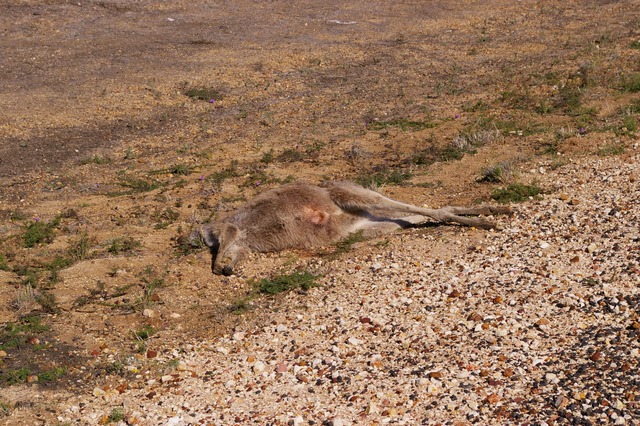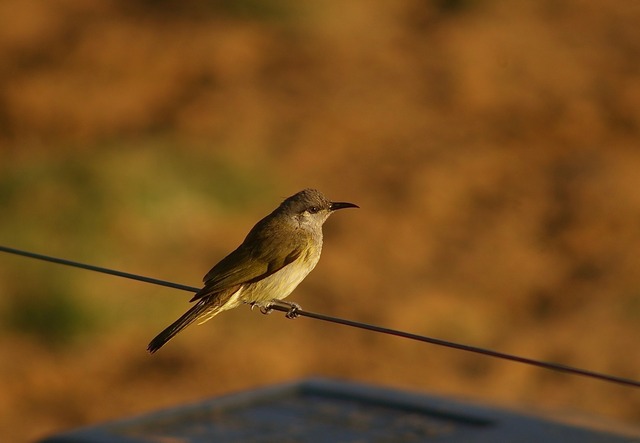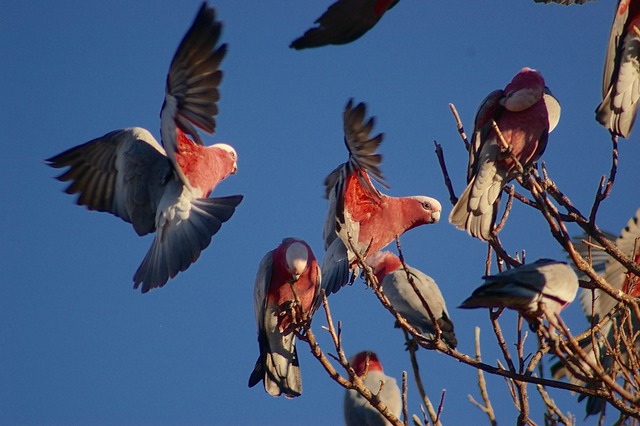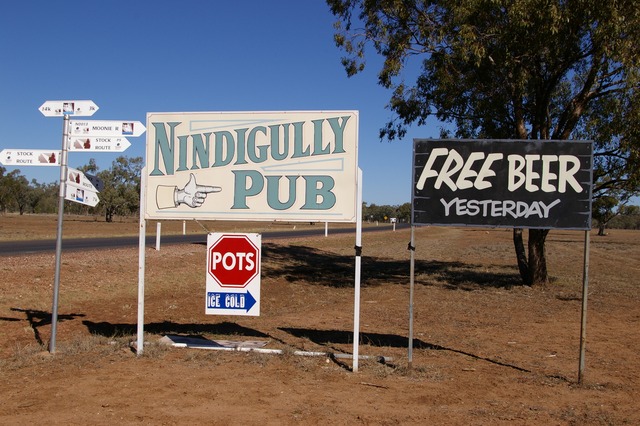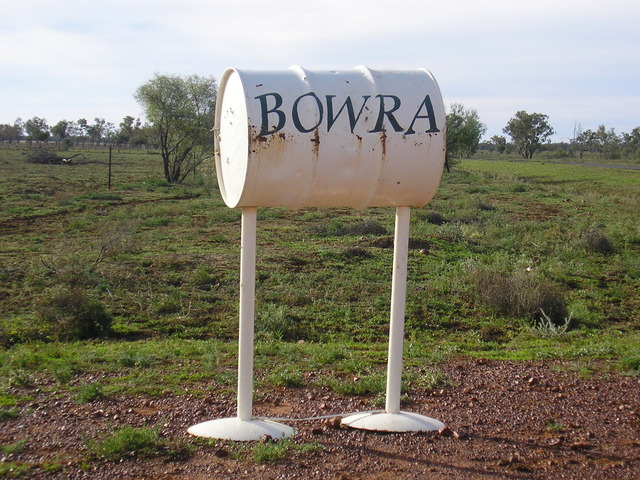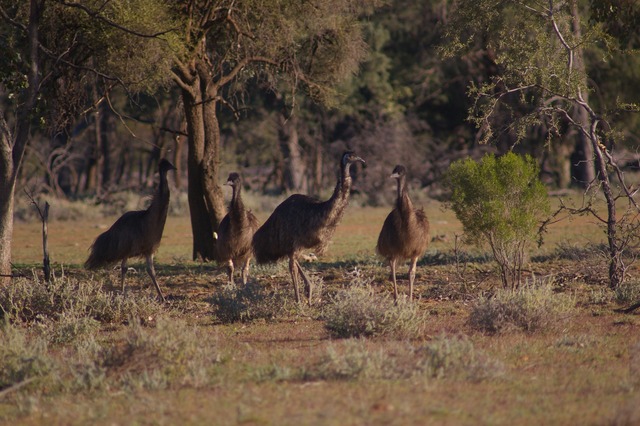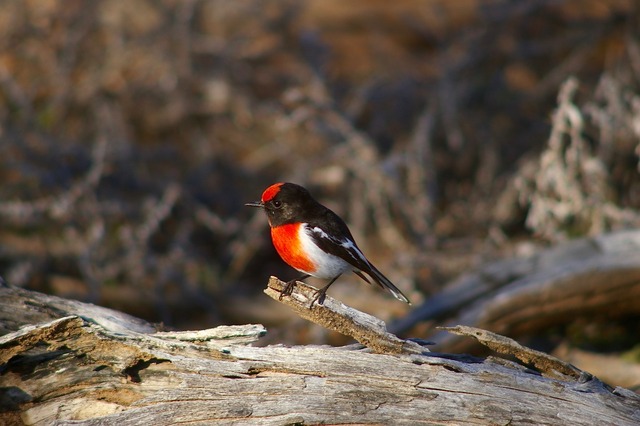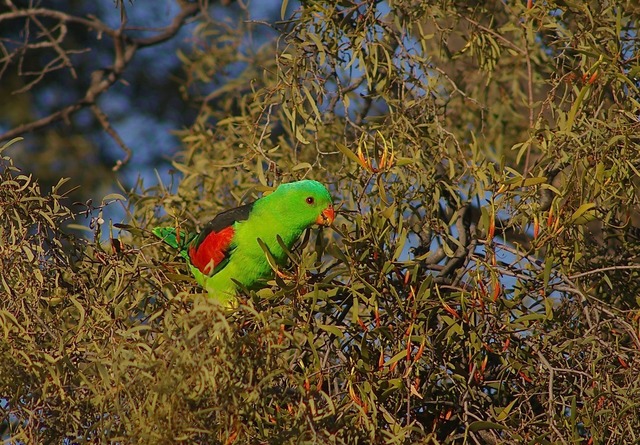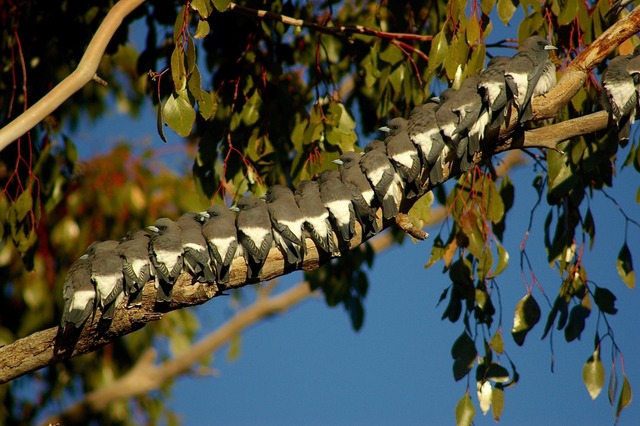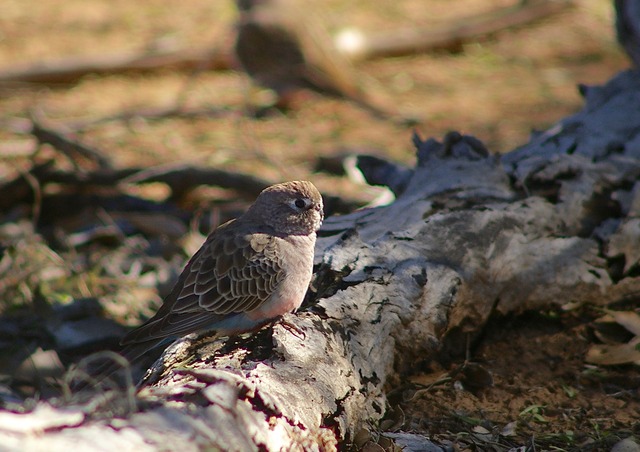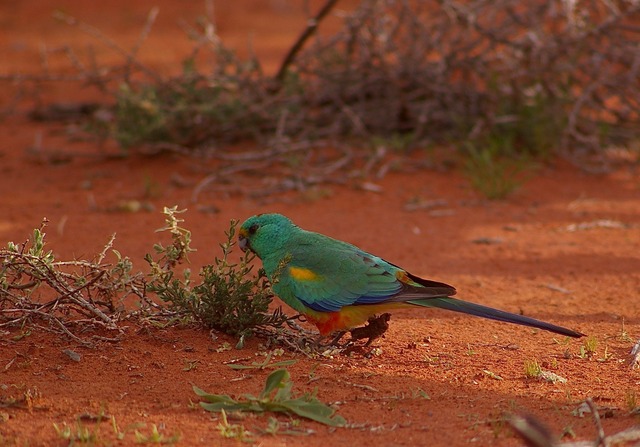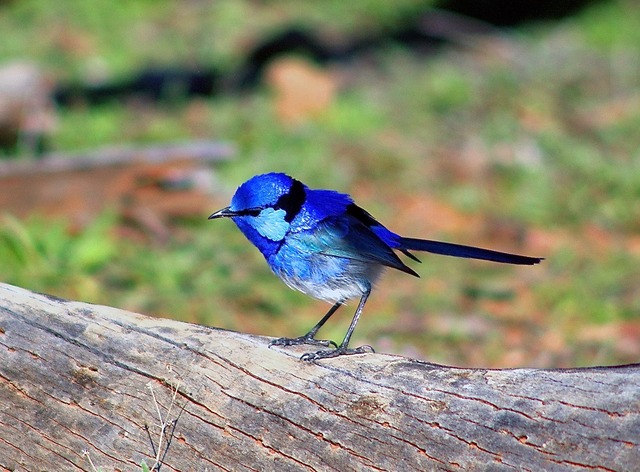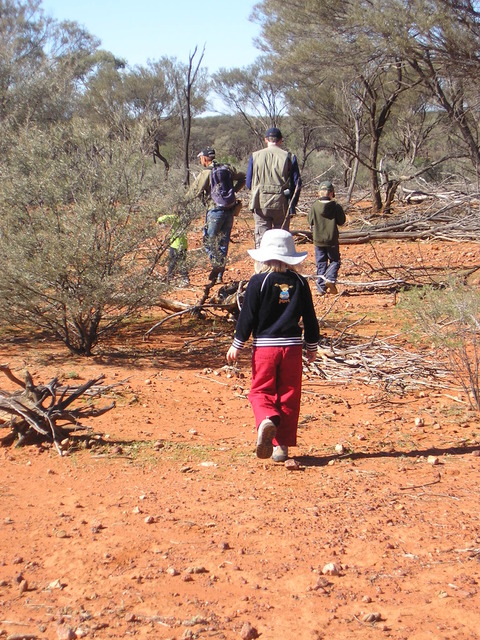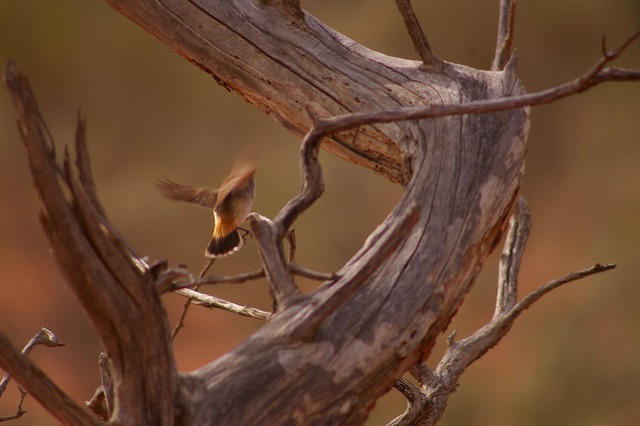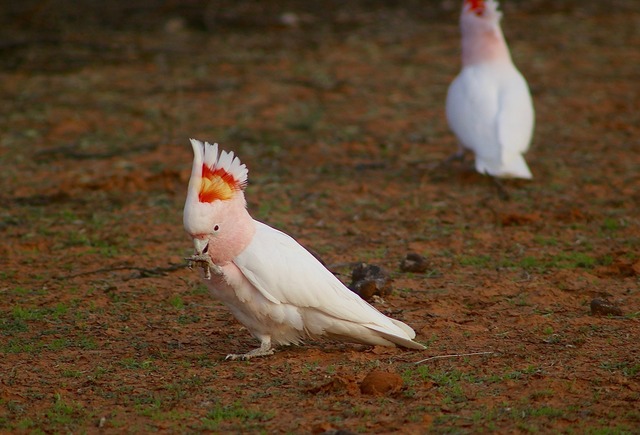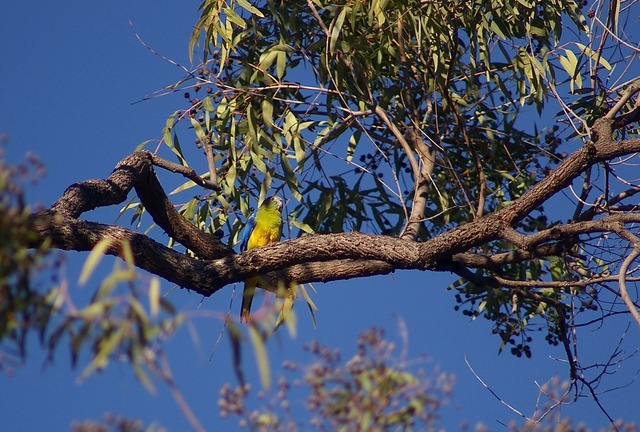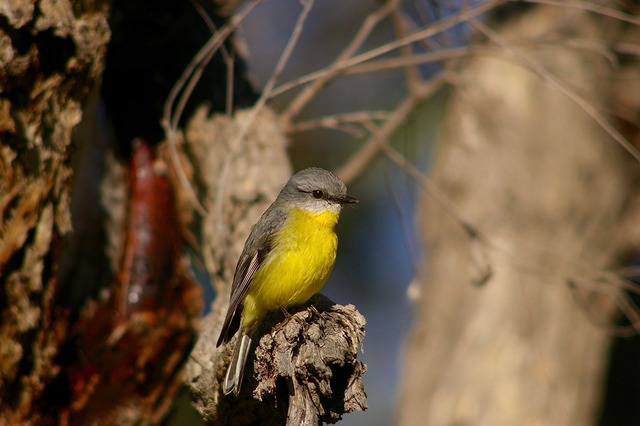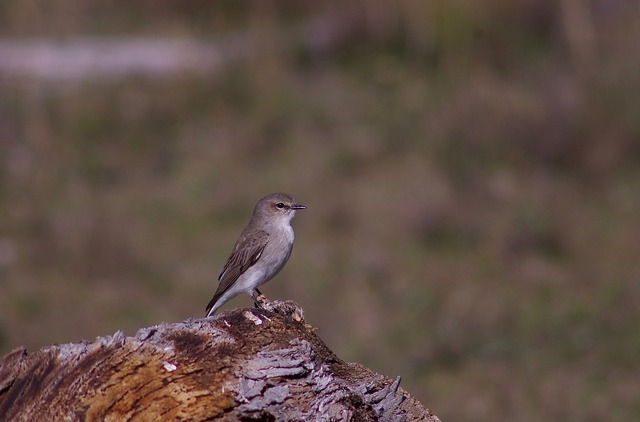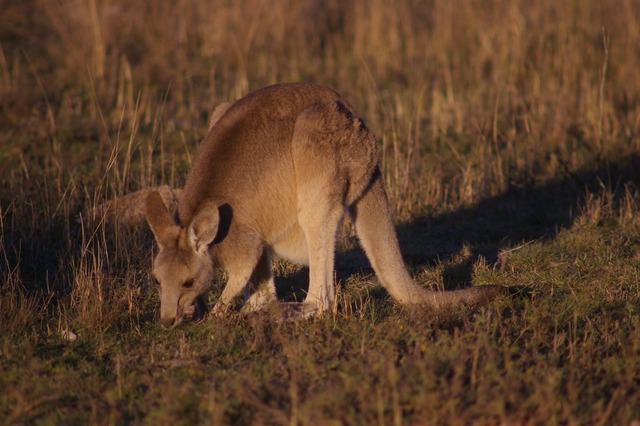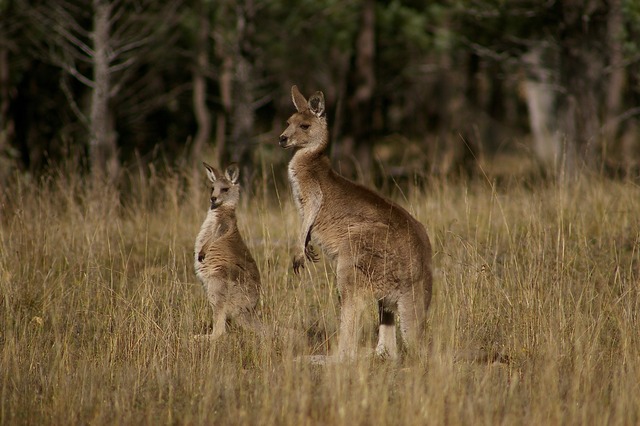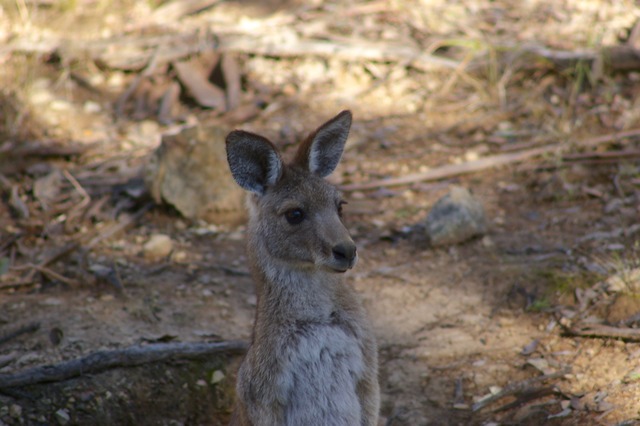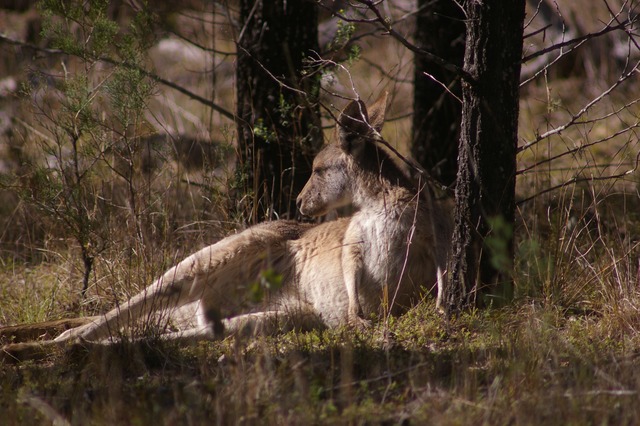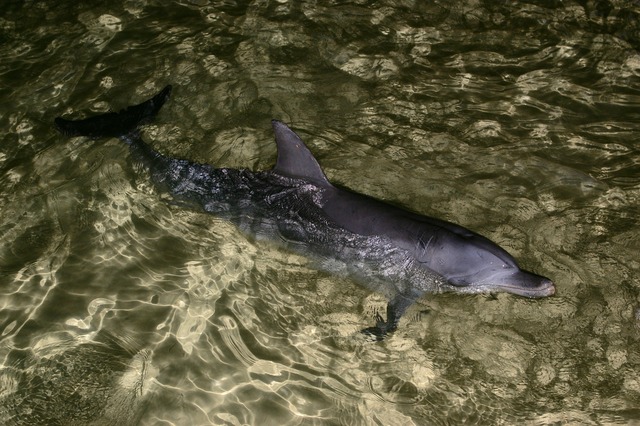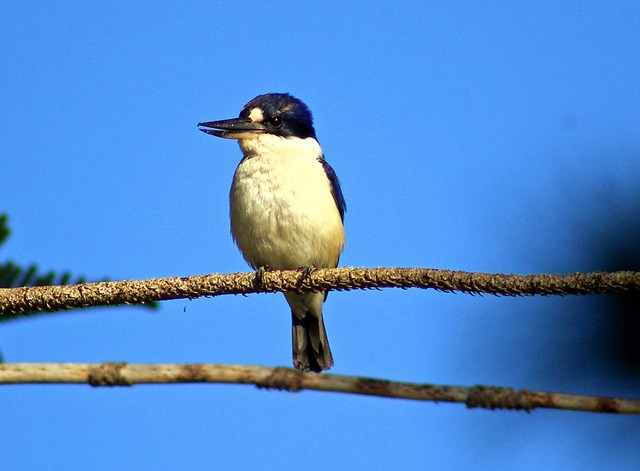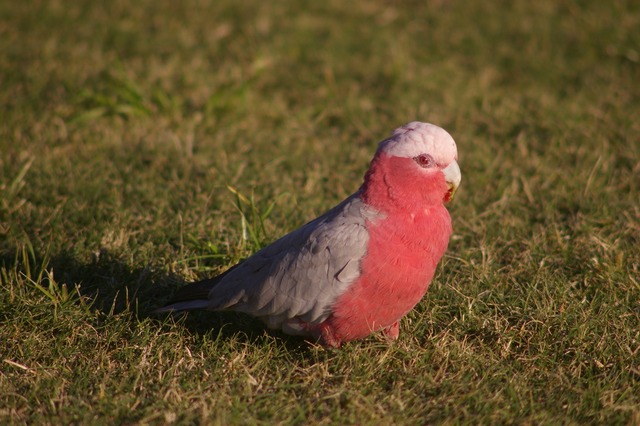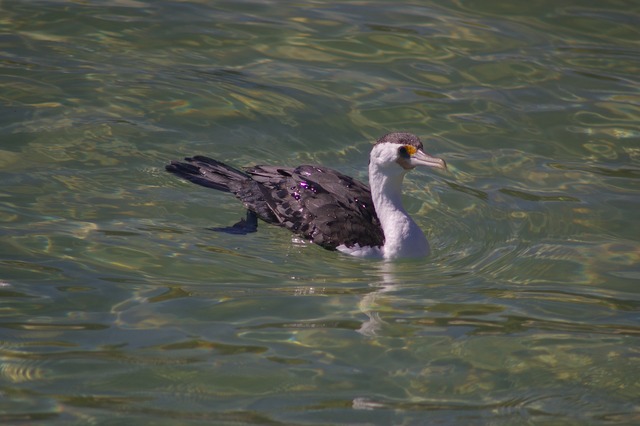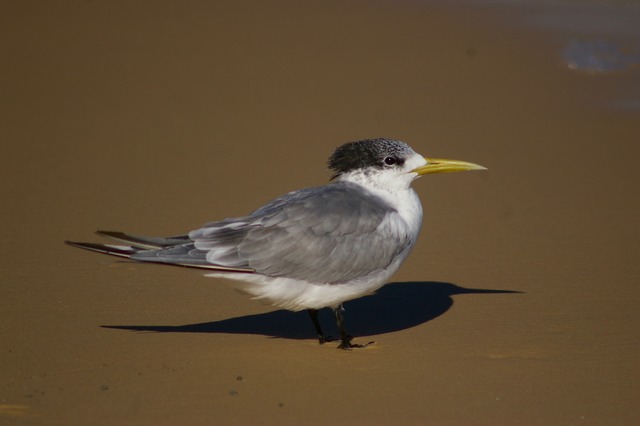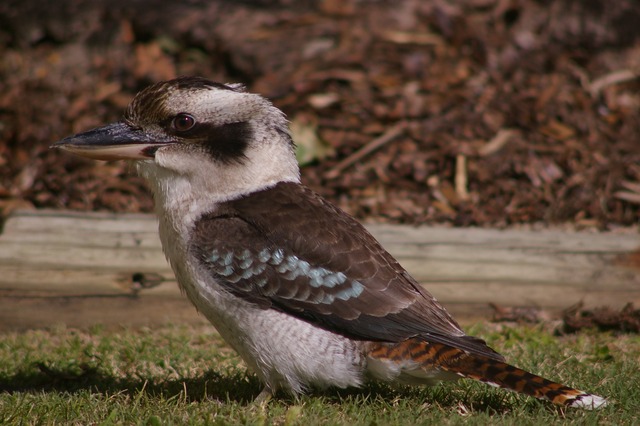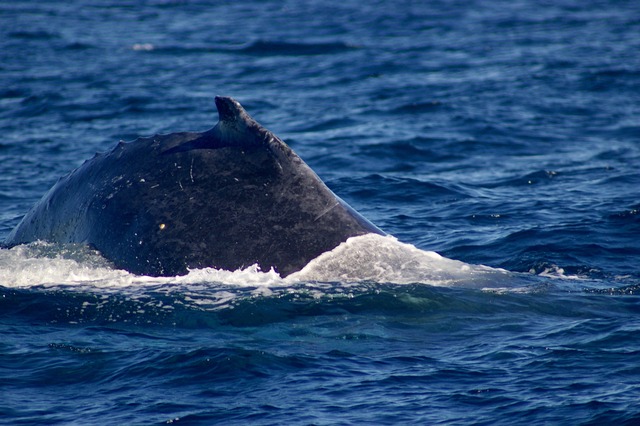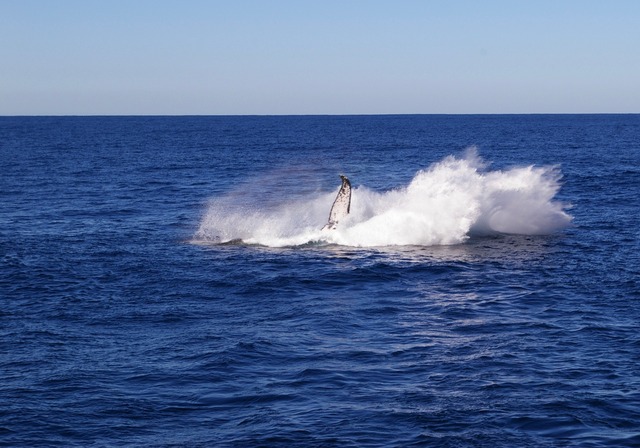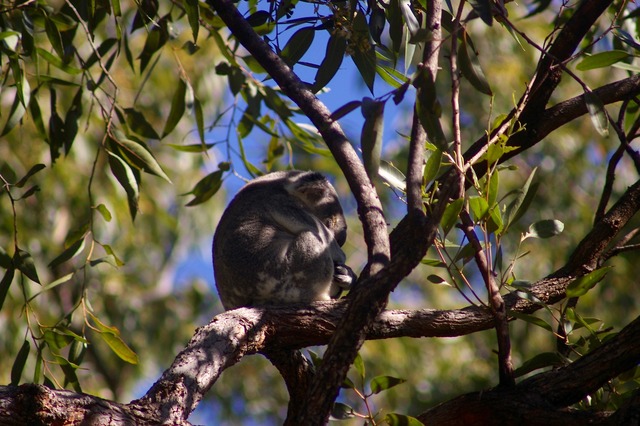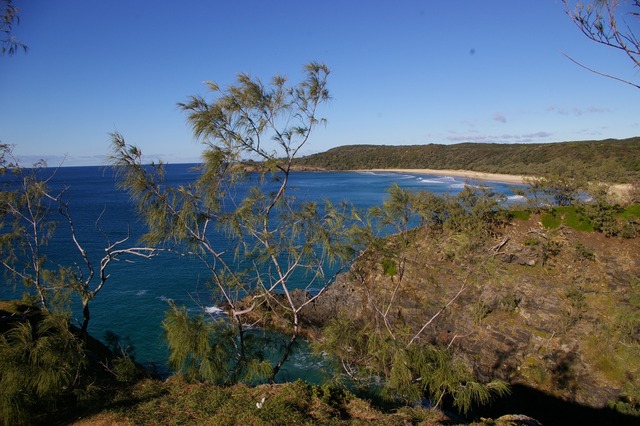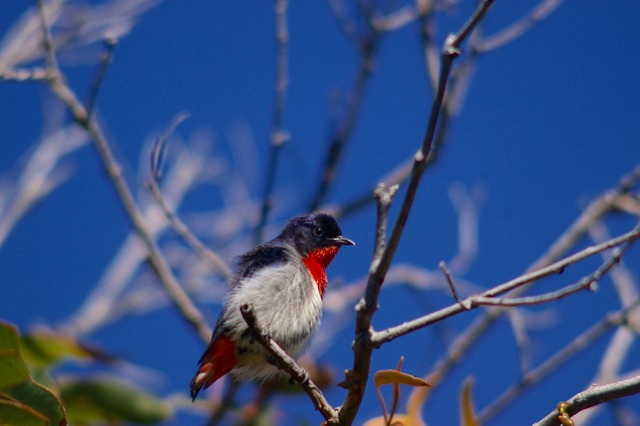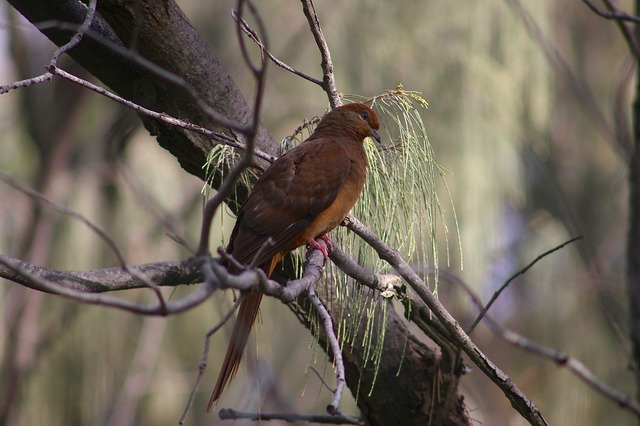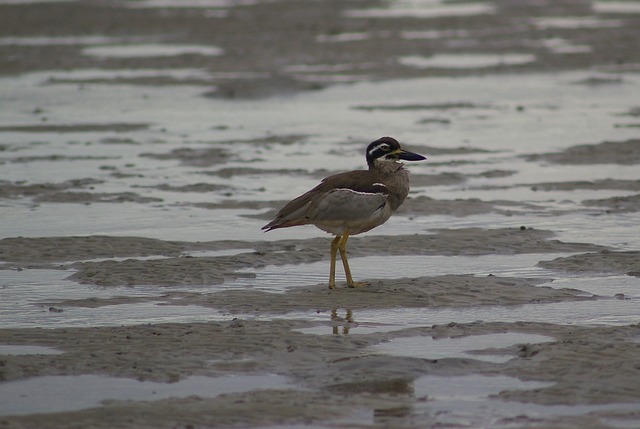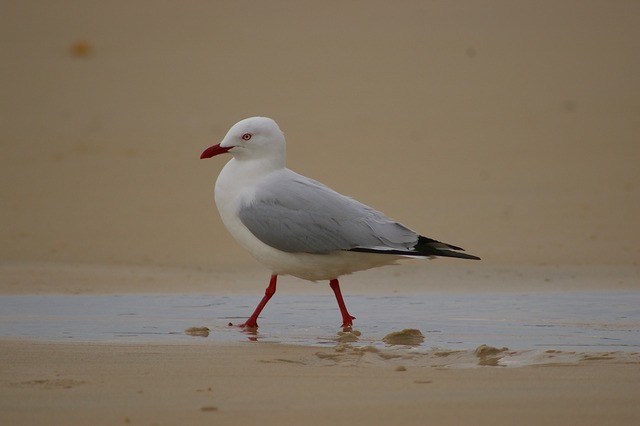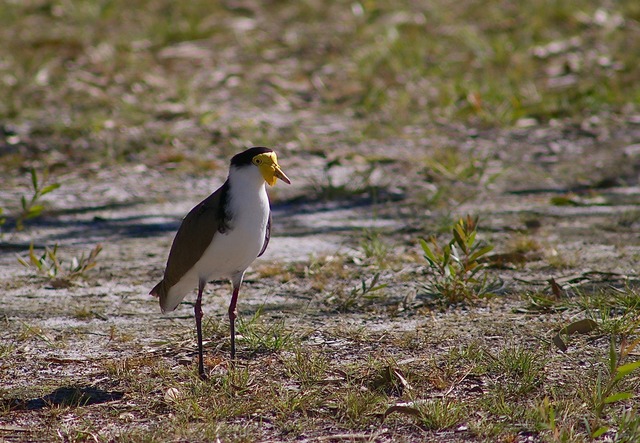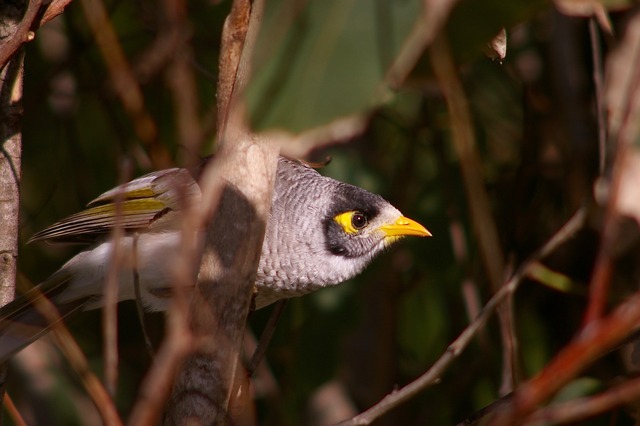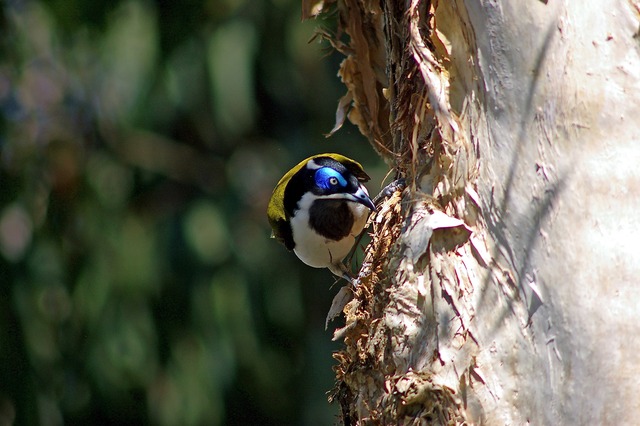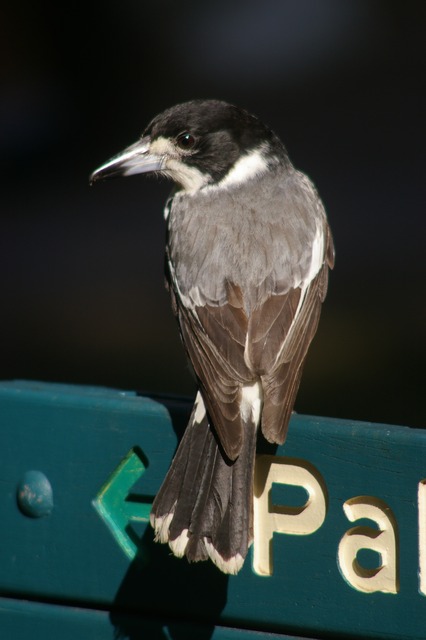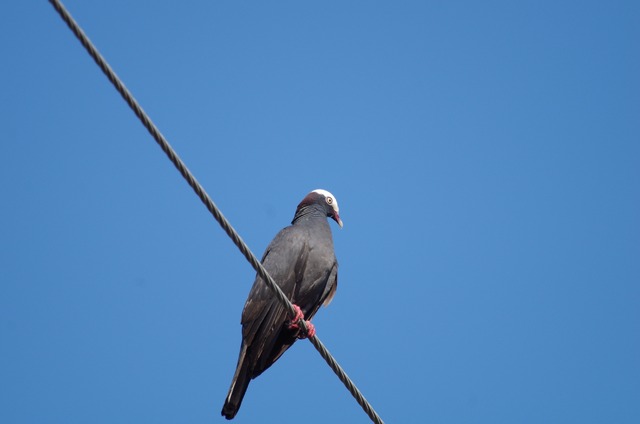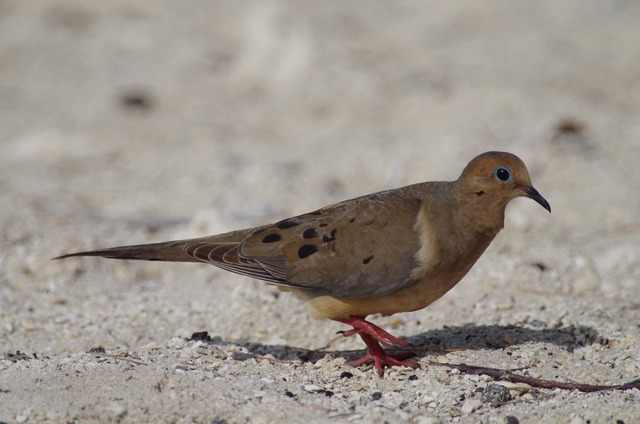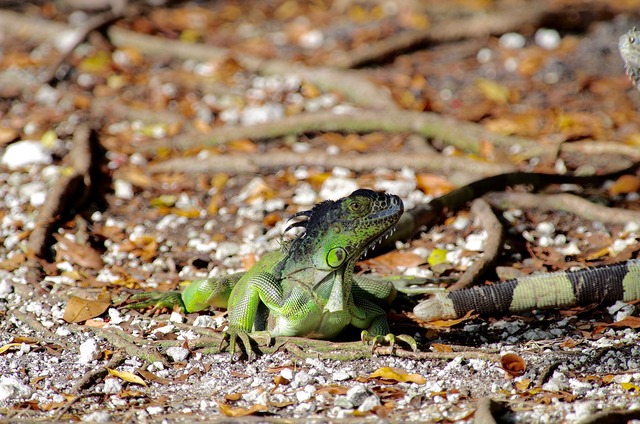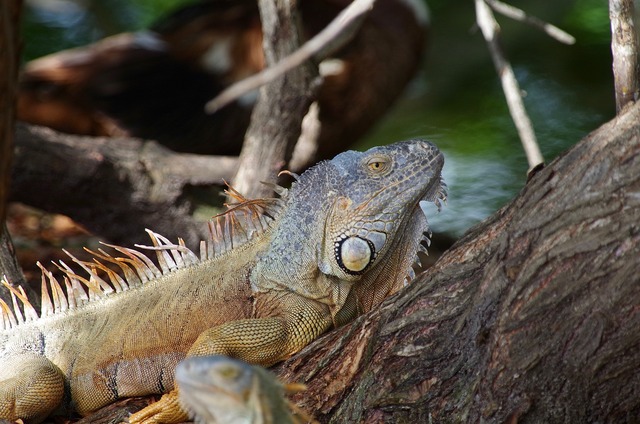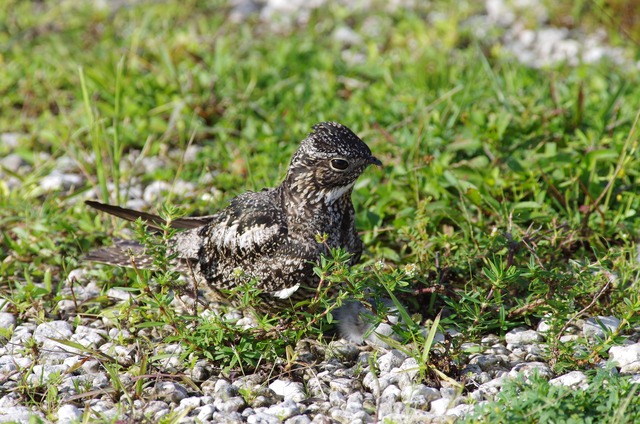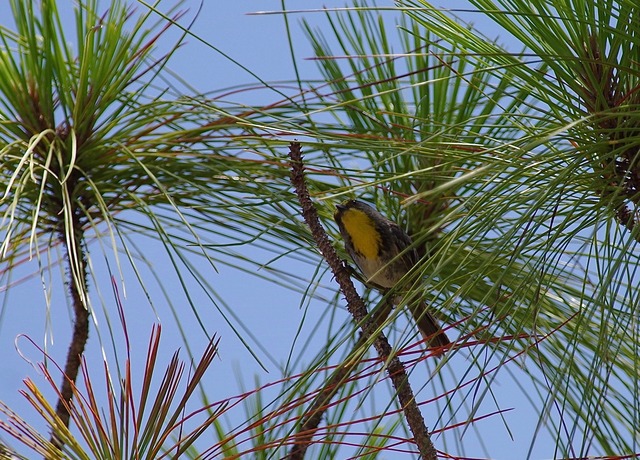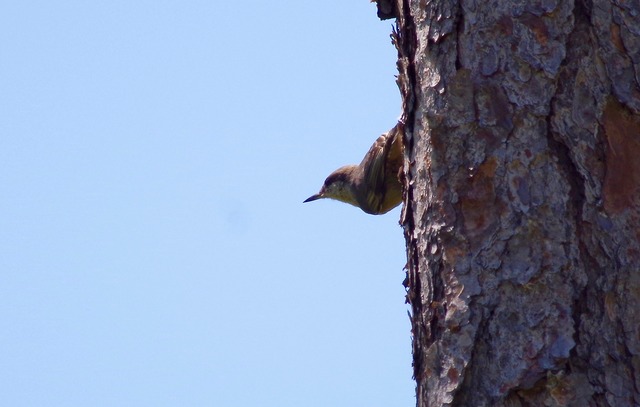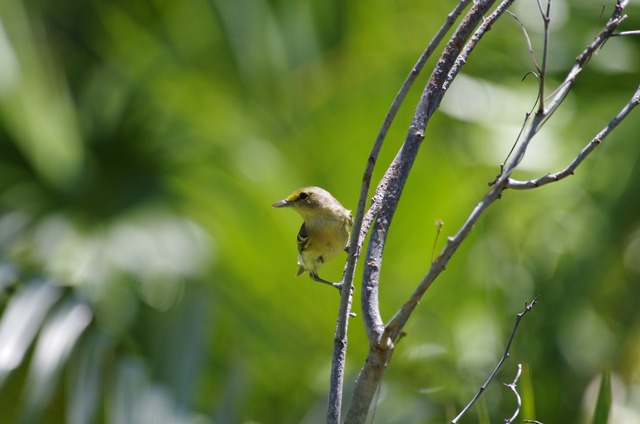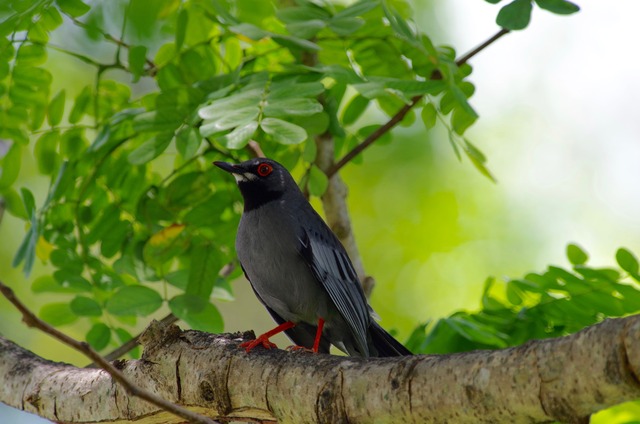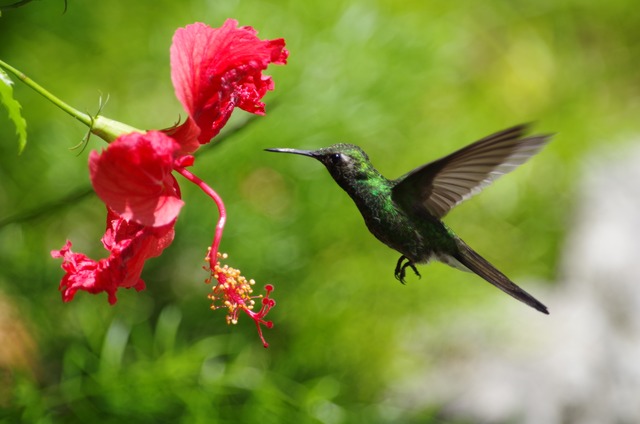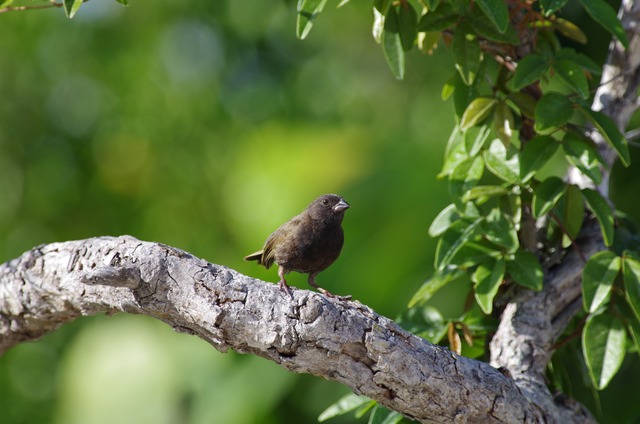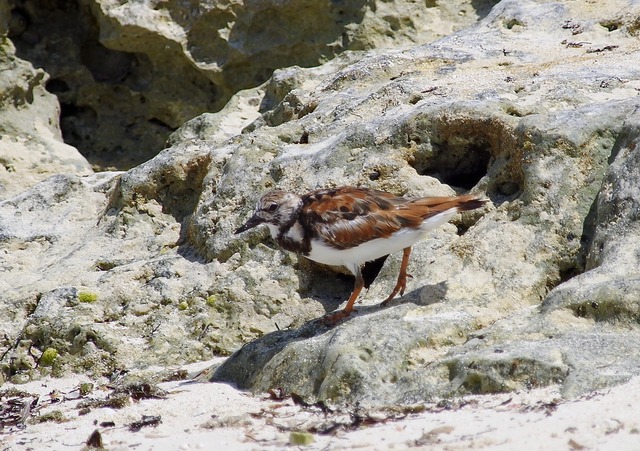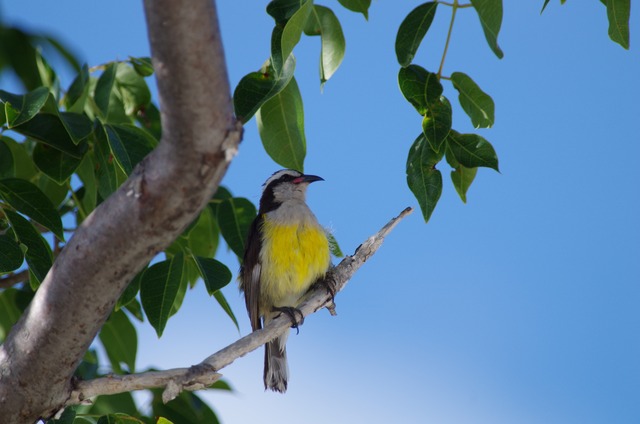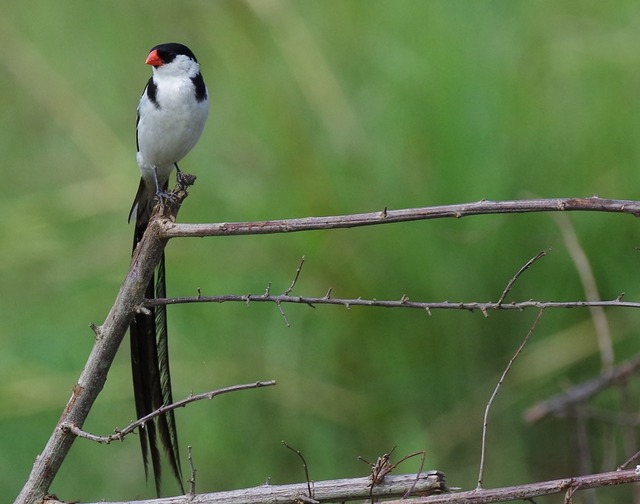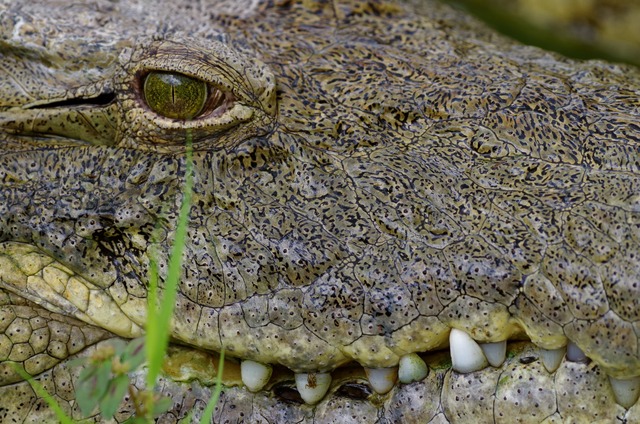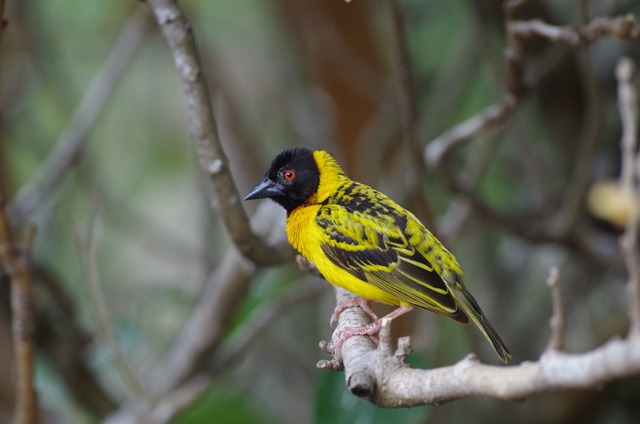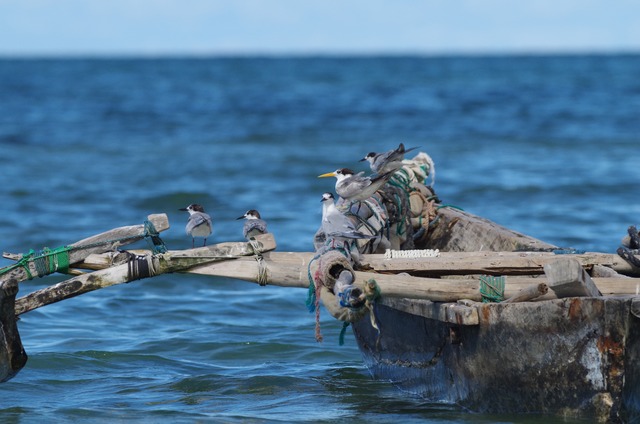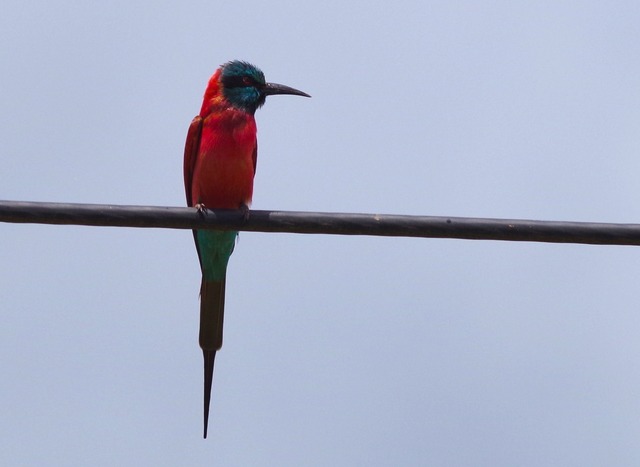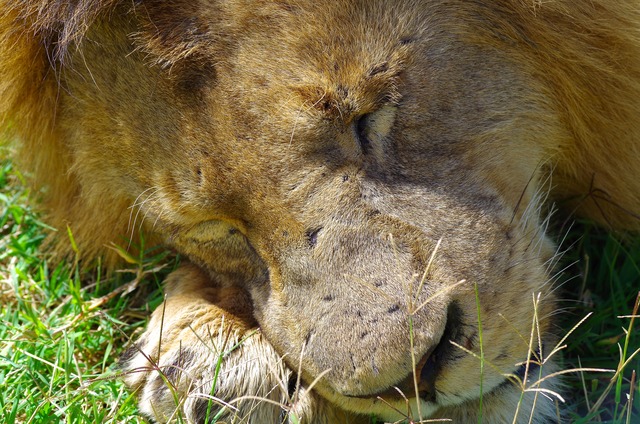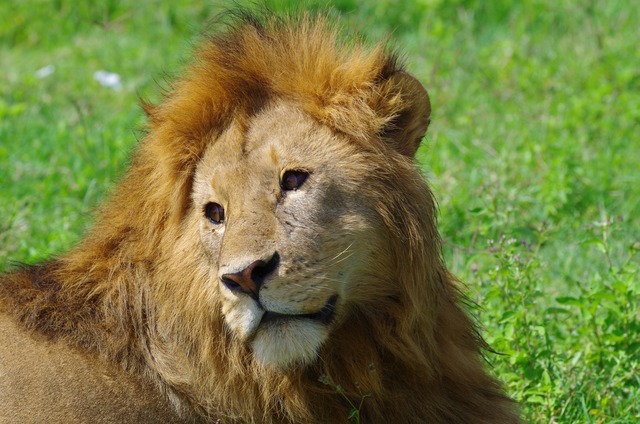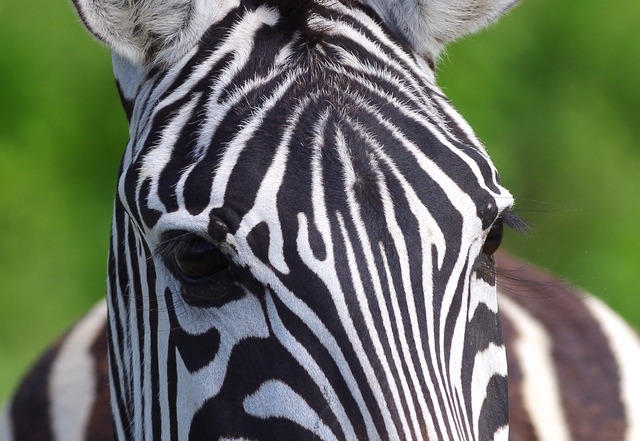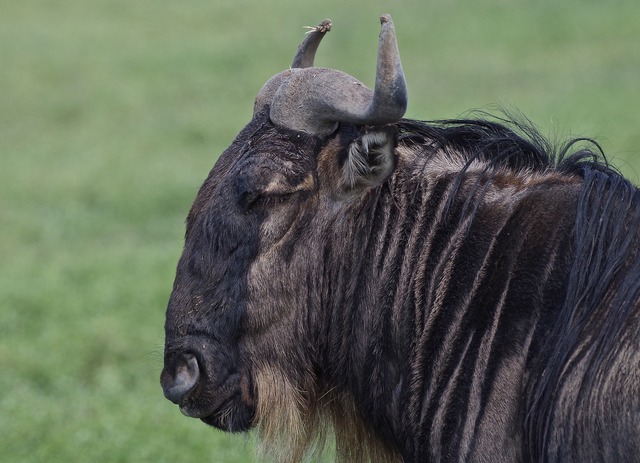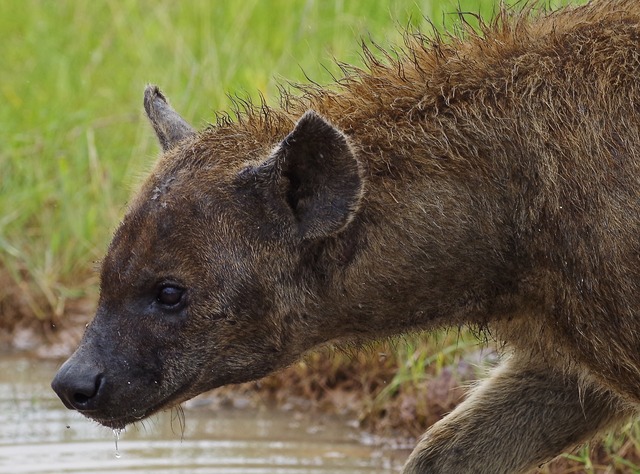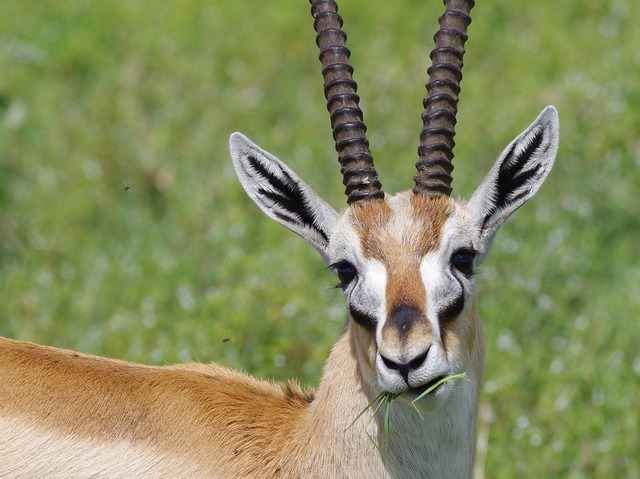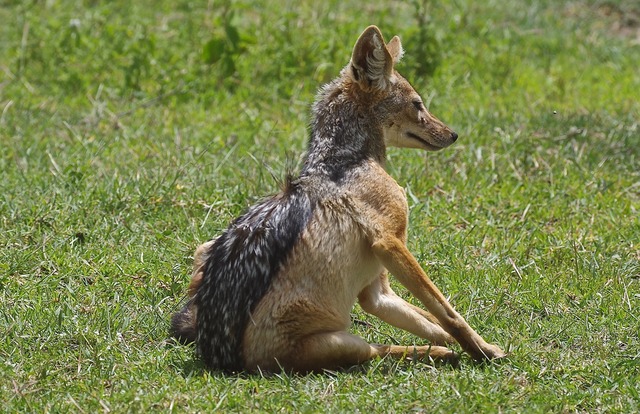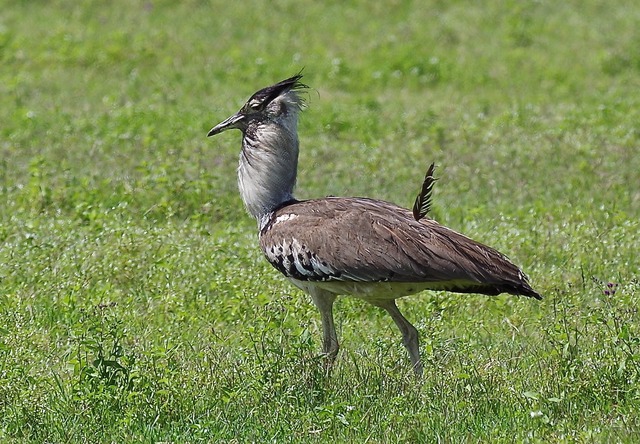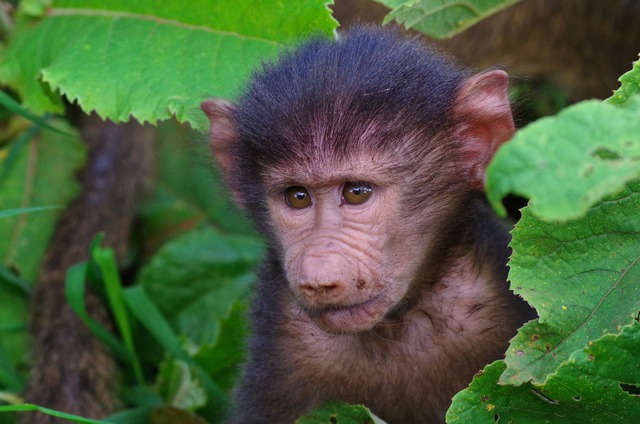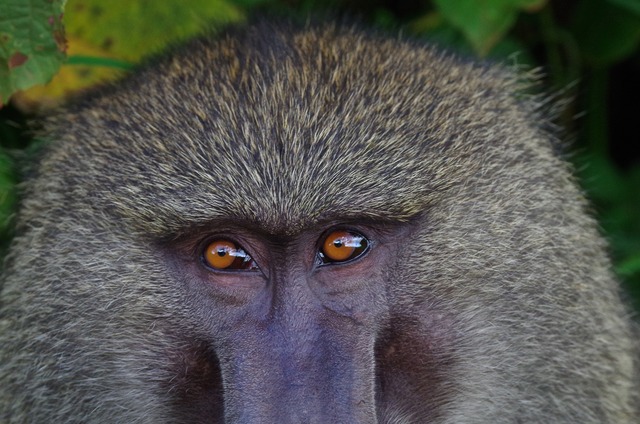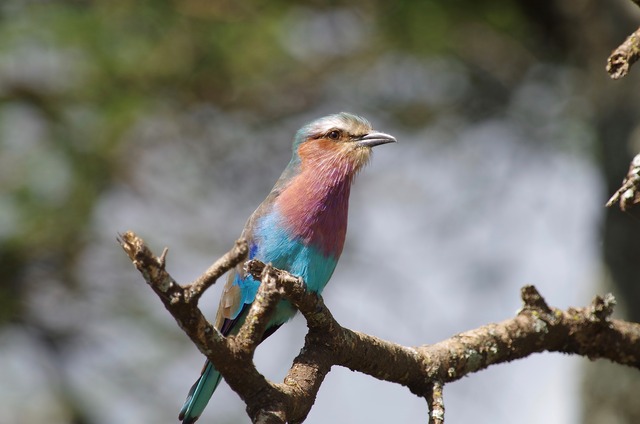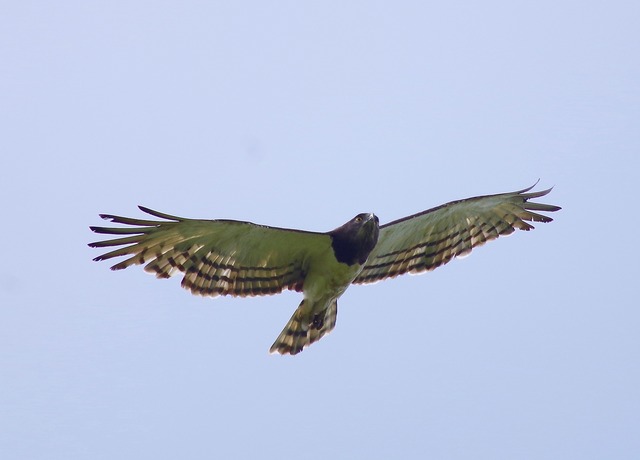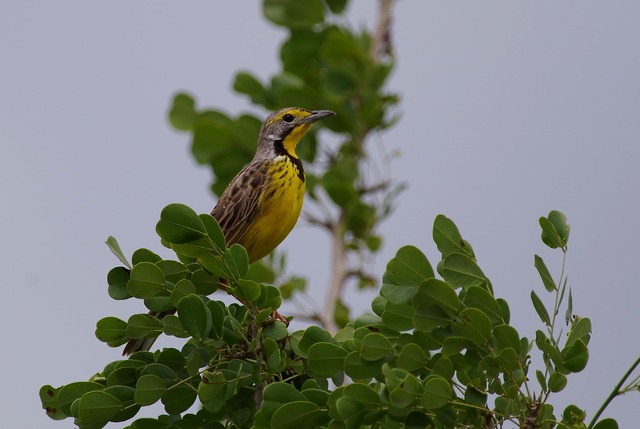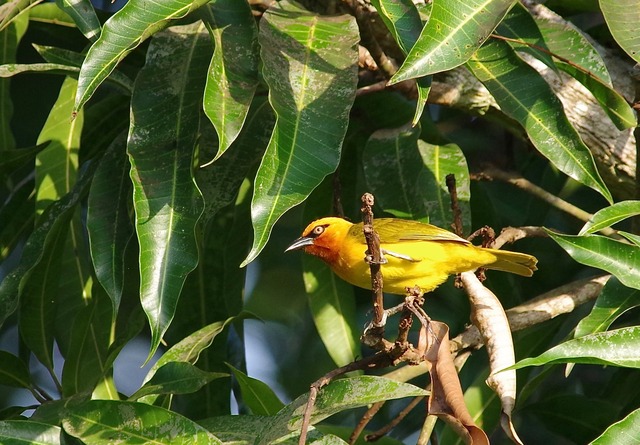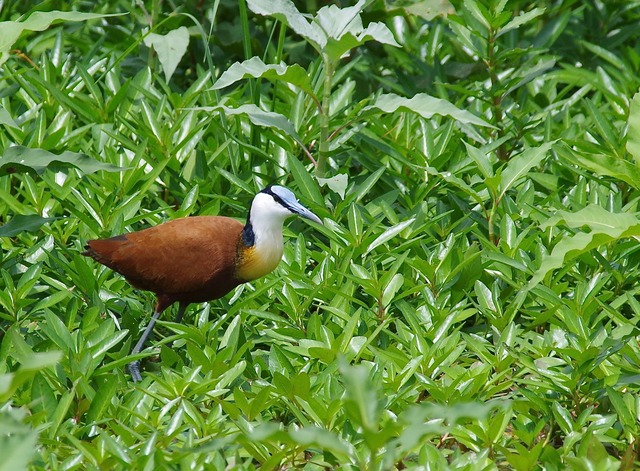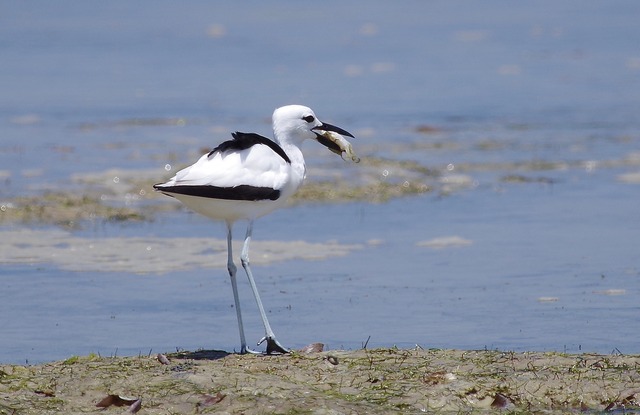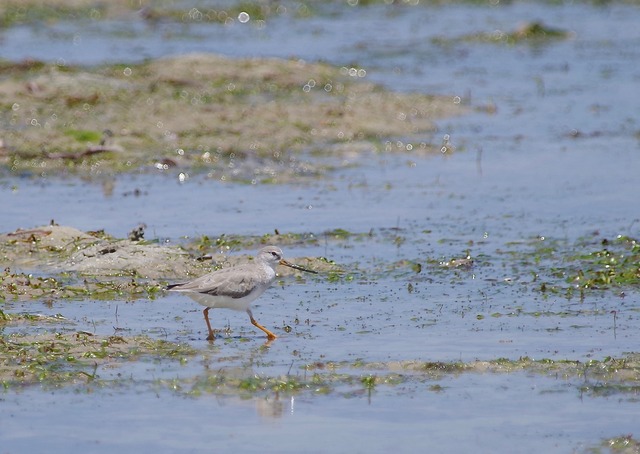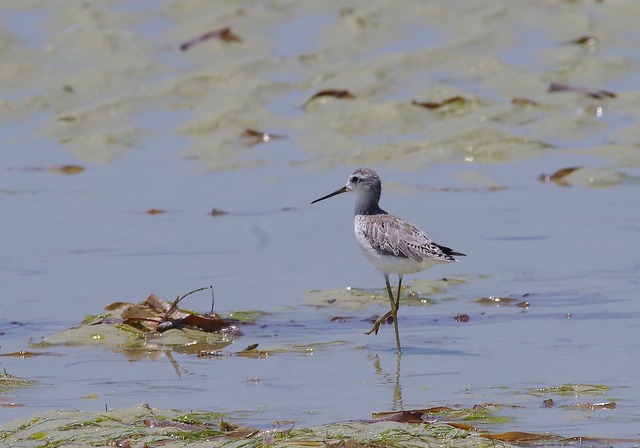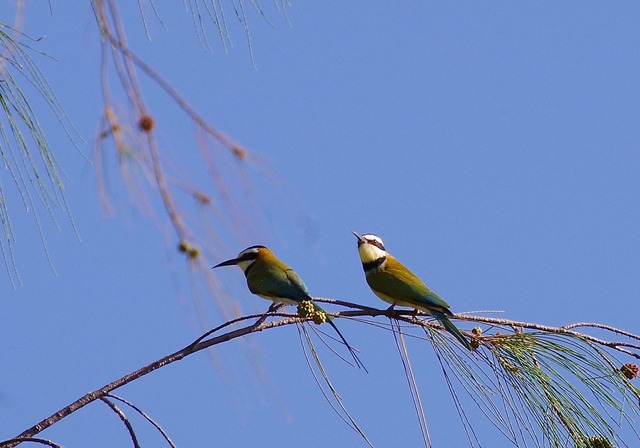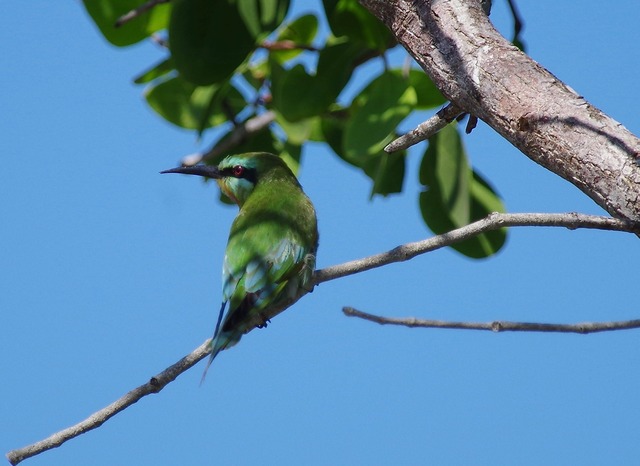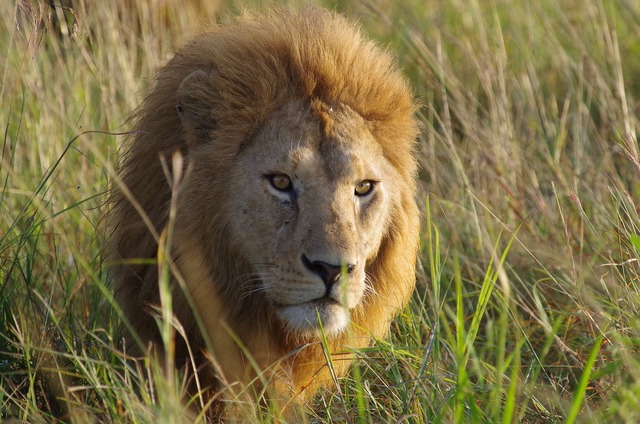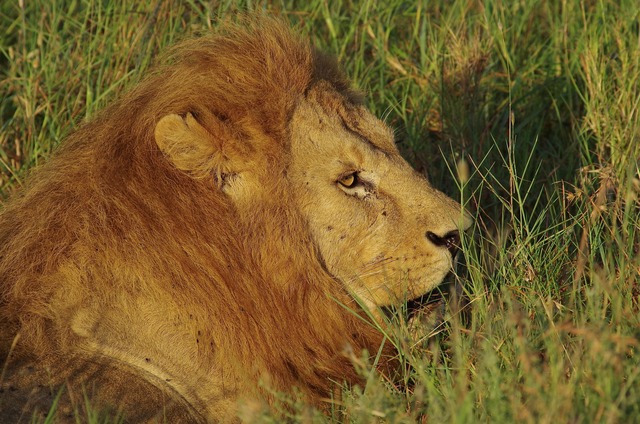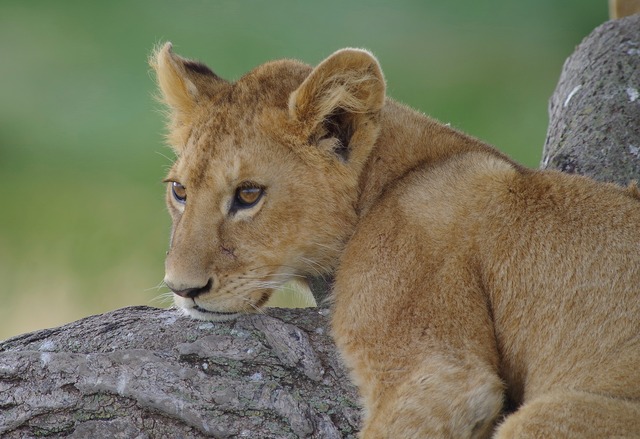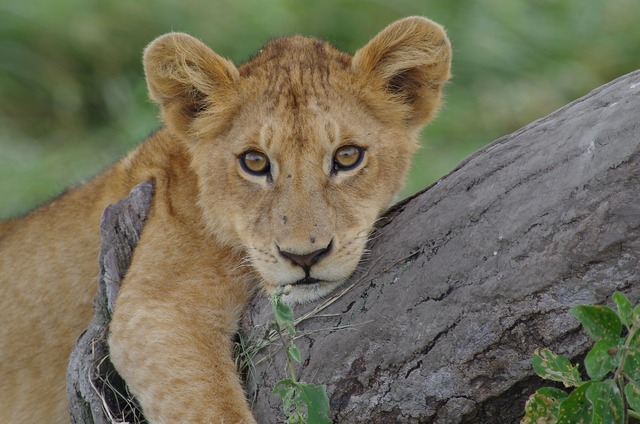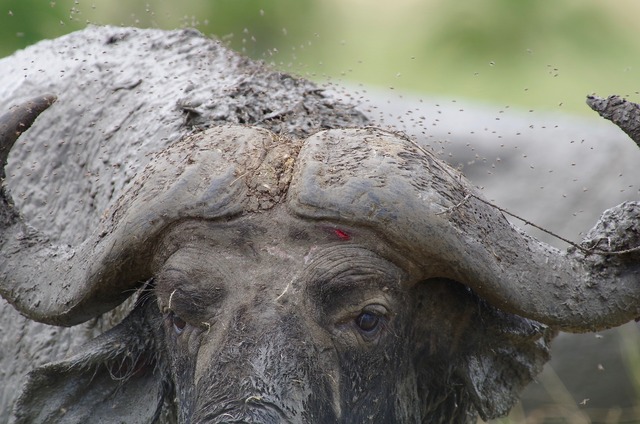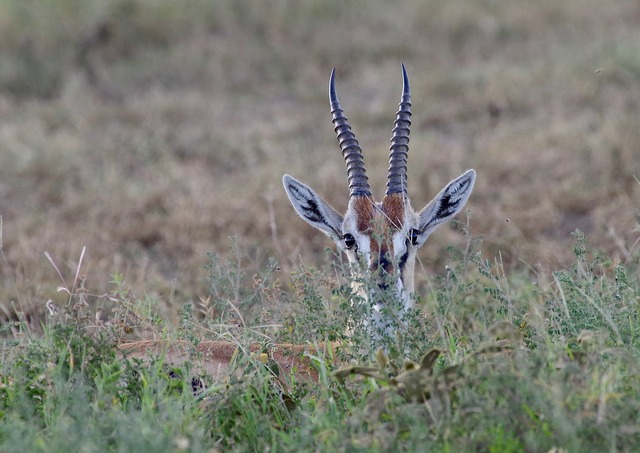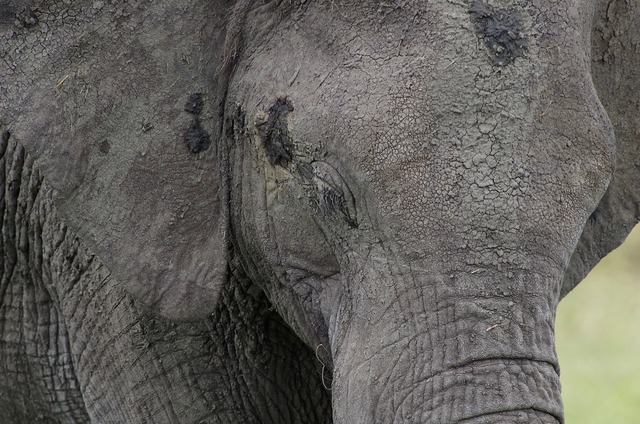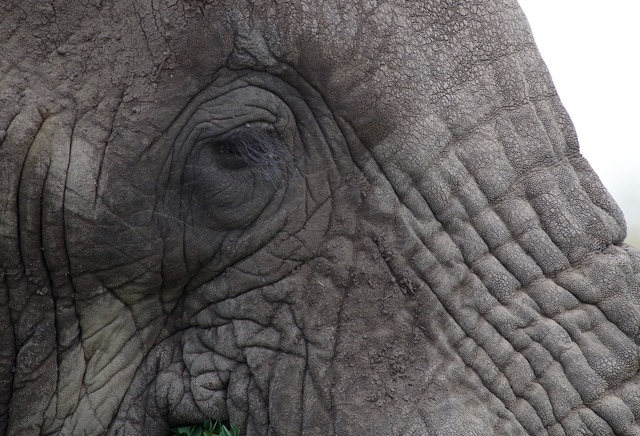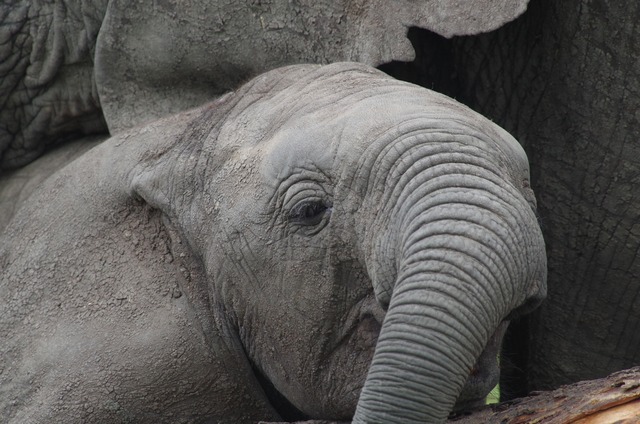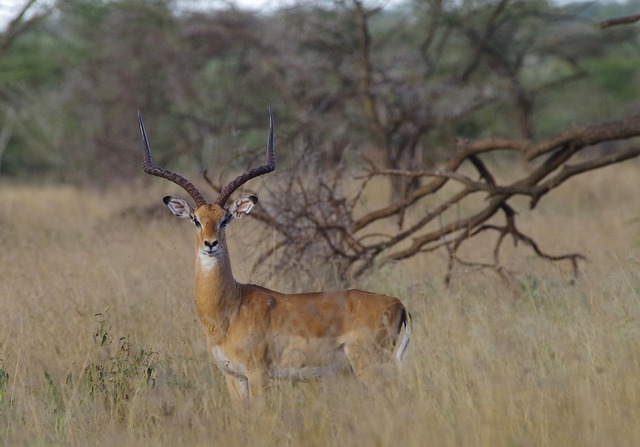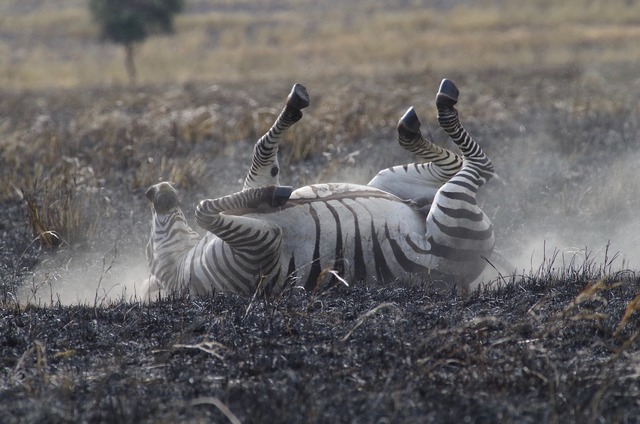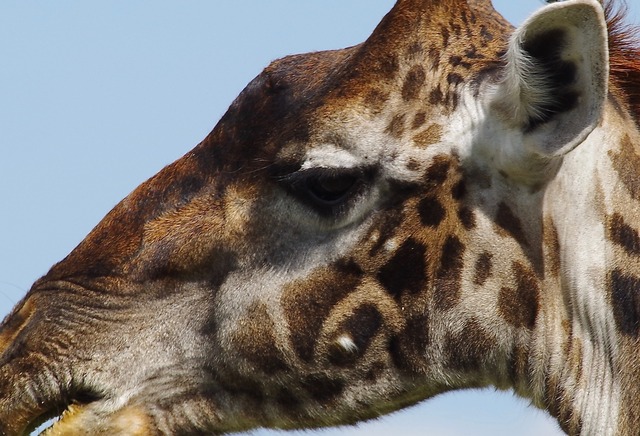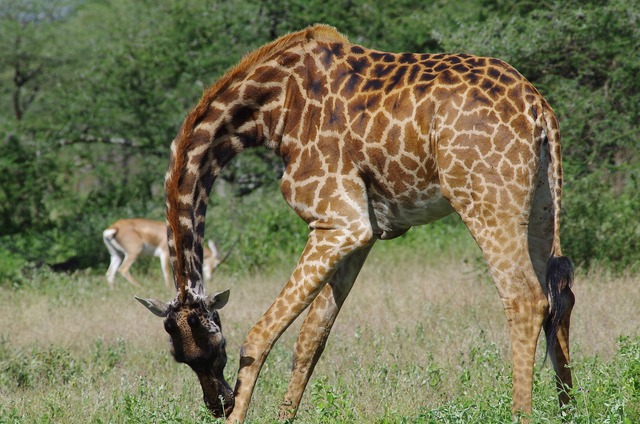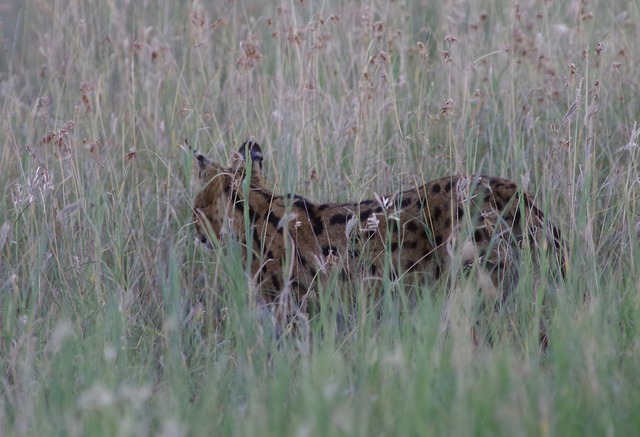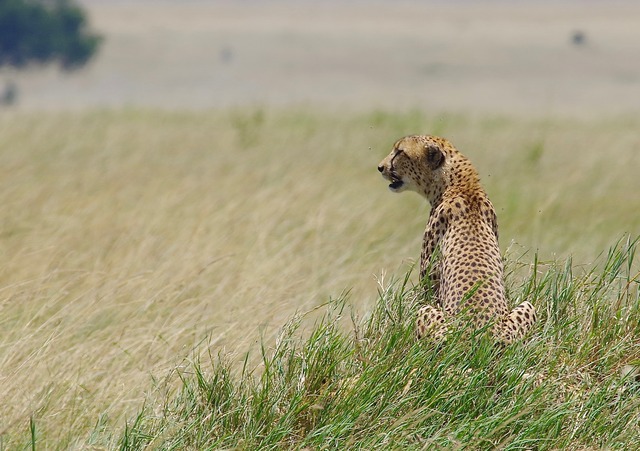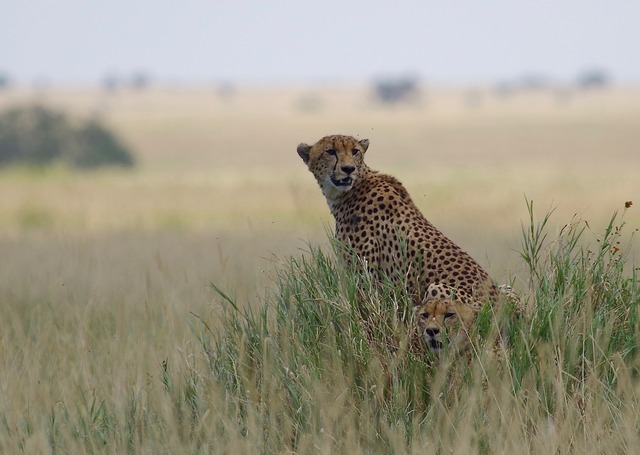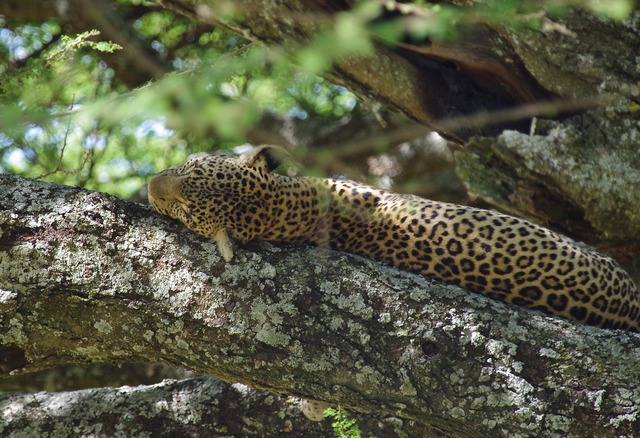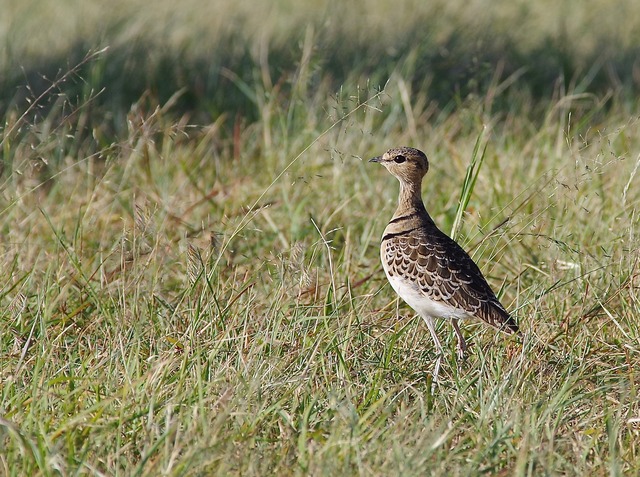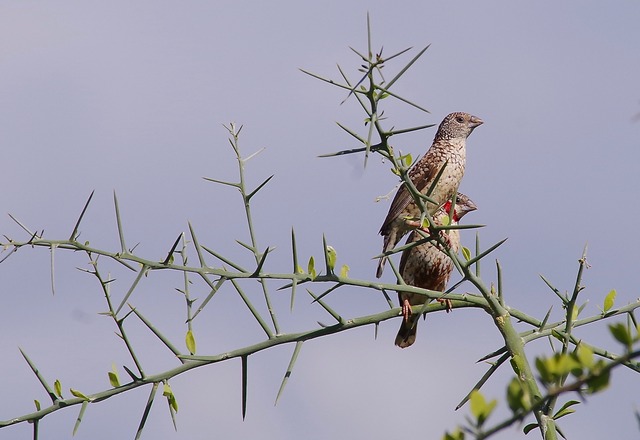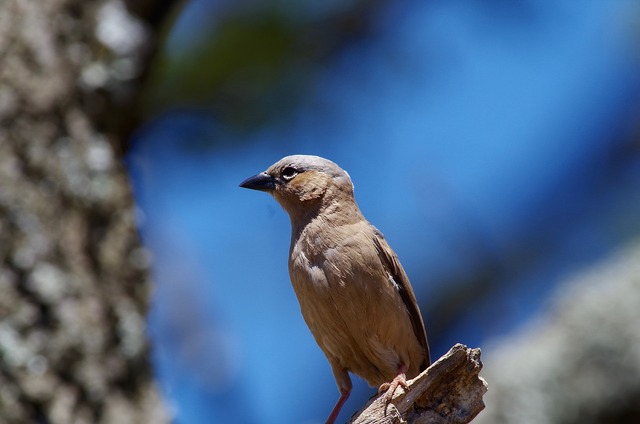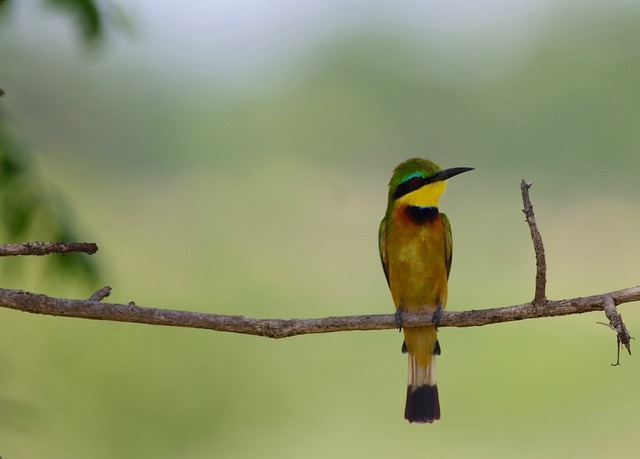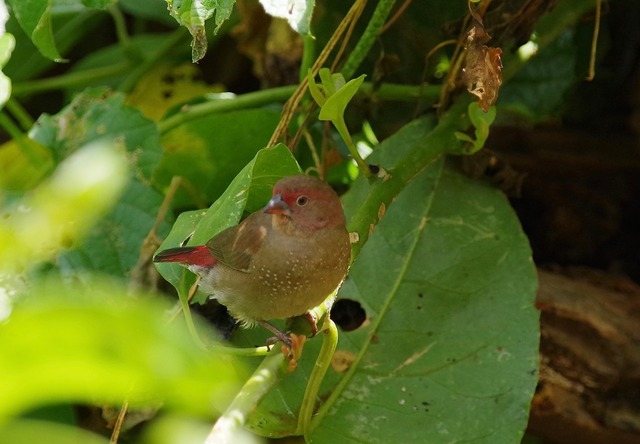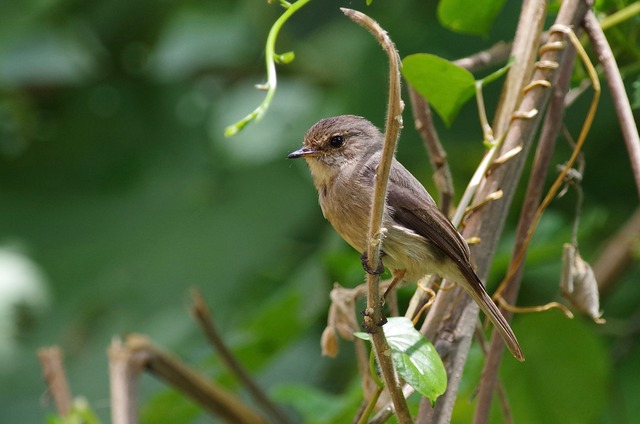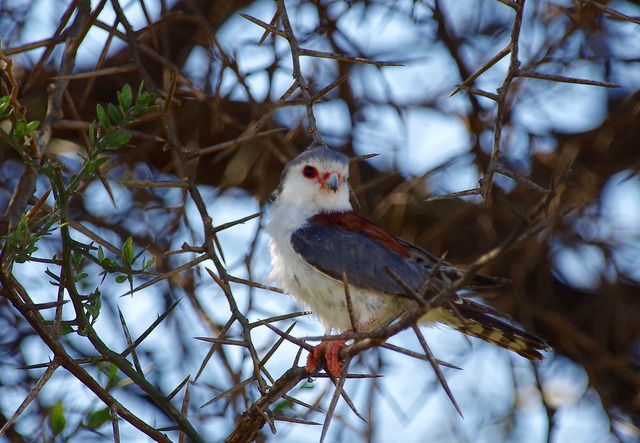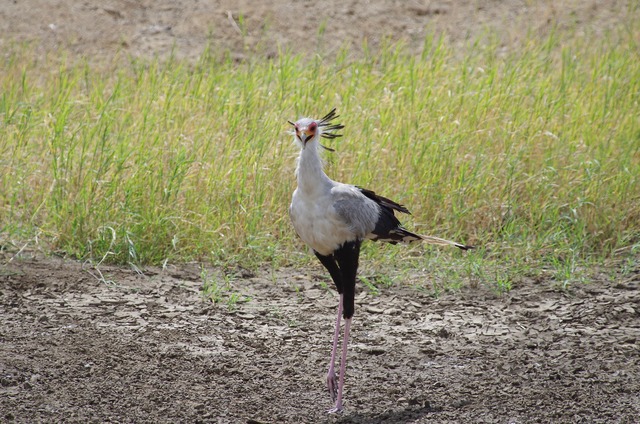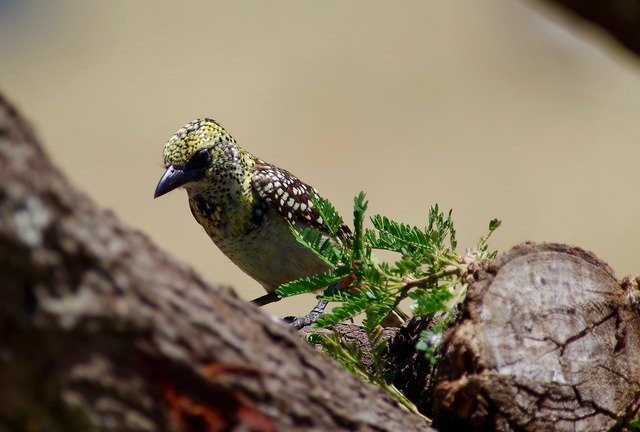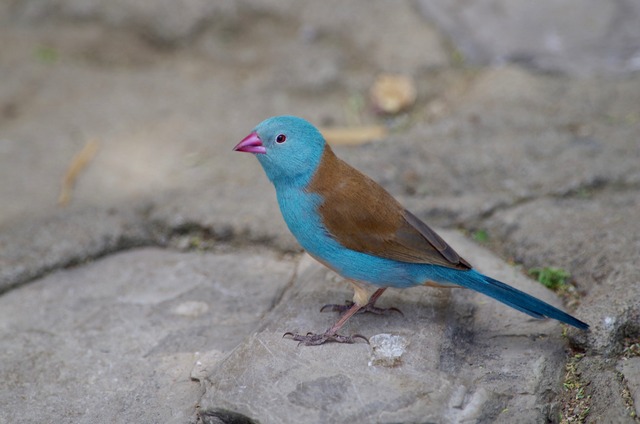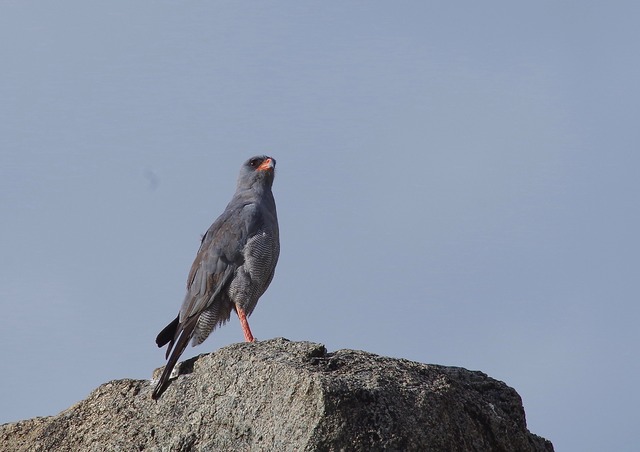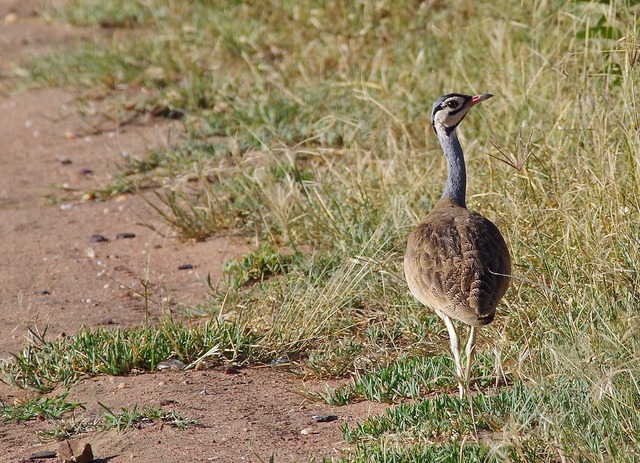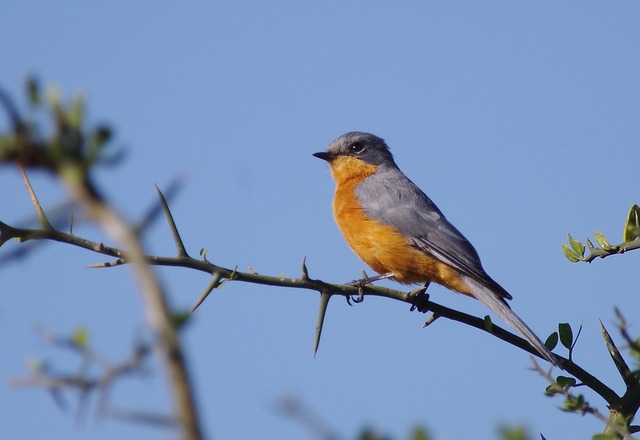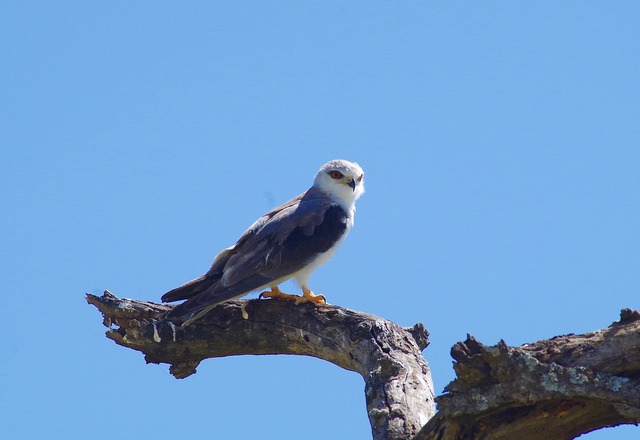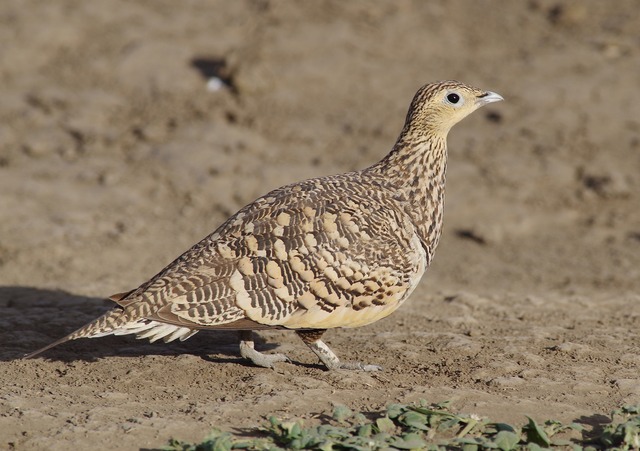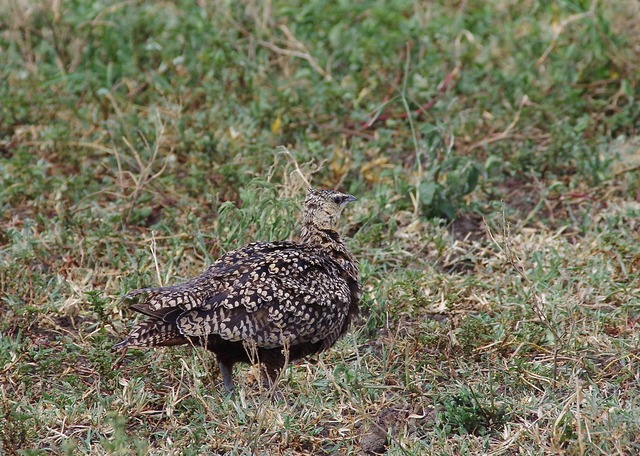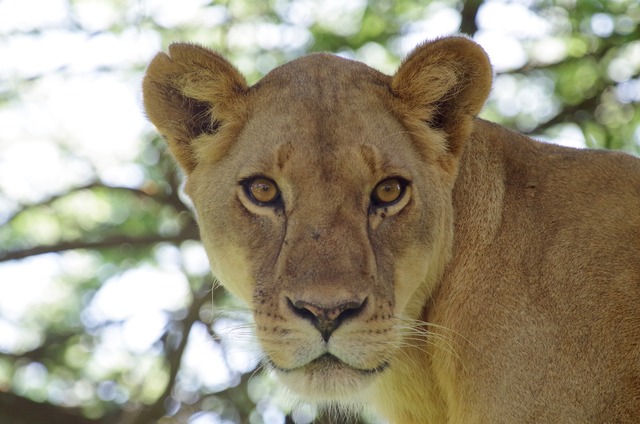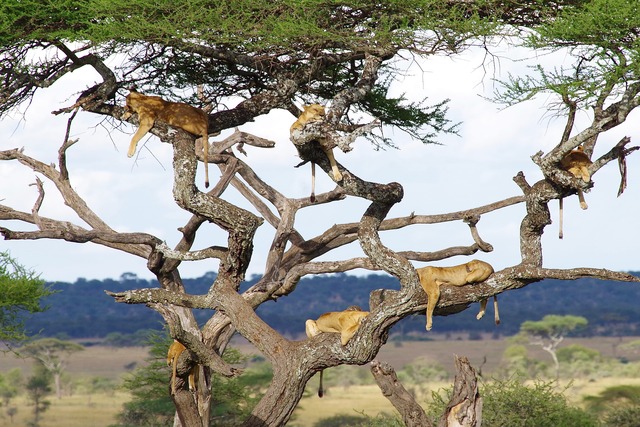Leif Rydell
Brisbane area and marvelous outback at Bowra.
In the summer of 2007 I made a fantastic trip with my family to Brisbane. Here our great friends Graham and Liz took care of us and let us experience some true feelings of Australia without a touristic feel. We had met them 2,5 years earlier when we made a combo trip to Brisbane and New Zeeland. When we arrived we spent a few night at their home in Jimboomba south of Brisbane. Before we headed west into the outback we visited the Lone Pine Koala Sanctuary (which is highly recommended for families) where you had the possibility to cuddle with koalas and kangaroos. Here you can see my kids with a Whiptailed Wallaby.
Our goal was the great birding and outback at Bowra station, just outside the small town of Cunnamulla, about 800 km straight west from Brisbane. We stopped for overnight on the way and enjoyed some local activities before we reached the former cattle range.
Graham driving west.
Liz having fun with my wife and son at a local caravan park
Bowra is quite unique as it is one of few places which has let natural growth to remain instead of clear it for other purposes. The result is a true outback location with the possibility to see some true outback birds. The area is not exactly teeming with birds but the quality is just excellent. On the way we also made some detours inte "Red soil country" which just gave us an extra feeling of this stunning country. Not so nice were all the roadkills we saw during our drive. Many kangaroos are killed on these roads even if australians try not to drive late in the evenings and the nights. "Never drive west in sunset" is a saying in this part of the world and it makes sense.
One of the most common birds is the Brown Honeyeater, a group that resembles our warblers. Also quite common are the Galahs which of some local farmers are consider as pests (like our Crows and Jackdaws).
Halfway, we stopped at the "famous?" local pub Ningully, where we had lunch. (I guess they don´t have the same rules for driving after drinking beer as we have in Sweden!?) but still a great experience.
Not luxury, but the gate to birding heaven.
One of the first birds to be encountered was the Emu.
We stayed in the former house of the son of the owner. They have moved away as the cattle ranch was not in use any more. It´s so great to experience different places to spend your nights. Usually you stay at ordinary hotels or similar. This was a "rundown" family house but still perfect for our stay with plenty of space. Our hosts had big laughs about us as we wanted more blankets for the nights (swedish people live among the ice and should not concern about cold nights) as the temperatures out here really could fall down during the nights at this time of the year. Birding begins right next to the houses. A short walk the first morning gave me birds as Red-capped Robin, Red-winged Parrot and a group of "tired in the morning" White-breasted Woodswallows.
We took our car out into the bush and started to see som magnificent birds like; Bourke´s Parrot, Mulga Parrot and Splendid Fairy-wren. Under the picture of the Fairy-wren you can see me and my kids walking in the red soil country looking for great birds.
Without managing to take photos we saw all the Babblers which are specialities for this place as well as White-winged Fairy-wren and Redthroat and many others.
However, the very handsome and characteristic outback bird Chestnut-sided Hornbill was polite enough for a sensitive photo.
As the evening came closer we had great looks at a family of the striking Major Mitchell´s Cockatoo which has an almost unnatural look.
As we drove back towards the coast we made a split, Liz took my wife and kids back to Jimboomba while Graham and I drove to the to great national parks, Sundown and Girraween. We spent our (very cold) night camping at Sundown, but as the sun rose, more than the heat from it warmed me up. Birding and wildlife were just great this morning and we saw some very nice birds as well as close encounters to the kangaroos, they were not afraid of us and let us come really close at a few occasions. Not my best picture, but still proof that we saw the local speciality, Turquoise Parrot as well as the more common Eastern Yellow Robin. The plain but handsome Jacky Winter also showed well.
Kangaroos, here the Eastern Grey, are such great creatures. They looks cool and relaxed but at the same time full of energy and power. Here some different poses of both young and adults. I especially like the last one as it almost give the same appeal as a resting human.
Time to say good bye to Graham and Liz (Thank you so much, you have been so generous both in mind and time) we set of for our last week. First we took the boat to Tangalooma resort on Moreton Island just outside Brisbane. A very nice (but very expensive) place to spend some days. The main attraction is the encounter with wild Bottlenose Dolphins which every evening come into shore to interact with humans as they are given some food. For the kids this is of course an unforgettable memory to stand in the water and have wild dolphins around you. They have all been given names and I think this is Nari, one of the adult females.
At the resort itself I saw some good birds as this Forest Kingfisher as well as the common Galah, Pied Cormorant and Crested Tern.
As with many resorts, also this place has some feeding, this time with the charming Laughing Kookaburra
The best wildlife experience for this trip was the whale watching tour we made. The weather was excellent and the Humpback Whales at their top mood. They came so close so we actually once got wet when one individual breached just next to the boat. The water was clear and we saw them dive under the boat. When we left they actually waved us good bye with their fins.
Our last days we spent up in the charming town of Noosa. At the national park here I saw my bird of the trip, the Noisy Pitta though I did´t manage to get a good photo of it. Here we also saw some wild Koalas as well as some stunning scenery and good birds like this Mistletoebird and Brown Cuckoo-Dove.
From Noosa we did a trip to Rainbow Beach, close to Fraser Island where I had the luck to see the tricky Beach Thick-knee as well as the more common Silver Gull, Masked Lapwing, Noisy Miner, Blue-faced Honeyeater and Grey Butcherbird.
This trip was just amazing with all great experiences and good birds. Australia is a fantastic place to visit as the people are so gentle and polite and the nature and wild life just stunning.
Complete list of birds/ mammals seen. The text is in Swedish but as the name of each species is in english as wells the location you will understand.
Birds
- Emu Relativt vanlig en bit inåt land där små flockar sågs.
- Great Crested Grebe. Några ex.
- Australasian Grebe. Som ovan.
- Australian Pelican Allmän vid lämplig biotop.
- Australasian Gannet 3-5 ex vid varje havslokal.
- Brown Booby 2-3 ex sedda vid rainbow Beach.
- Oriental Darter 2 ex totalt.
- Little Pied Cormorant. Ett fåtal ex strax utanför Brisbane.
- Pied Cormorant. Relativt vanlig
- Great Cormorant. Oräknade.
- Little Black Cormorant. Några ex bestämda.
- White-faced Heron. Syns både här och var.
- Pacific Heron. Enstaka ex.
- Great Egret Enstaka ex.
- Little Egret Enstaka ex.
- Striated Heron 1 ex vid delfinmatningen
- Australian Ibis. Relativt vanlig.
- Straw-necked Ibis. Inte ovanlig.
- Royal Spoonbill. 2 par sedda runt Jimboomba och Brisbane.
- Yellow-billed Spoonbill. Vanligare än sin släkting, +30.
- Magpie Goose Några flockar på väg mellan Rainbow Beach och Noosa.
- Black Swan. Två par.
- Pacific Black Duck Allmän.
- Grey Teal. Relativt vanlig.
- Chestnut Teal. Inte ovanlig.
- Pink-eared Duck. Några runt Jimboomba
- Hardhead. Några ex på olika platser.
- Australian Wood Duck
- Musk Duck. En ensam fågel i en damm på väg mot Bowra
- Osprey. 2 ex totalt.
- Black-shouldered Kite
- Black Kite. Några ströex.
- Square-tailed Kite. Vi hade turen att se 1 ex på väg mot Bowra.
- Black-breasted Buzzard
- Brahminy Kite. Någraströex i närheten av vatten.
- Whistling Kite. En av de vanligare rovfåglarna.
- Collared Sparrowhawk. 1 ex på väg mot bowra.
- White-bellied Sea-eagle Enstaka ex längs med kusten.
- Wedge-tailed Eagle Totalt ca: 10ex längs med vägen till Bowra.
- Swamp Harrier 1 ex strax utanför Jimboomba.
- Australian Hobby 1ex Sundown.
- Brown Falcon Enstaka ex Bowra.
- Australian Kestrel Vanligaste rovfågeln. Som mest 9 ex utanför Jimboomba.
- Australian Brush-turkey Vanlig i parker och fåtalig i skog.
- Dusky Moorhen Sedd på flera lokaler med enstaka ex.
- Eurasian Coot. Inte ovanlig.
- Brolga 2 ex höll till nära bostaden Bowra.
- Comb-crested Jacana.Ett par söder om Jimboomba.
- Bush-Thick-knee 3-4 ex kom fram på kvällen vid Tangalooma resort.
- Beach Thick-knee ! ex överraskade vid Inskip Point, Rainbow Beach.
- Pied Oystercatcher Enstaka ex Inskip Point.
- Masked Lapwing Relativt vanlig.
- Banded Lapwing En flock på 7 ex Bowra.
- Red-capped Plover 5 ex Inskip Point
- Black-fronted plover Enstaka ex på flera lokaler. Föredrar små vattensamlingar.
- Black-winged Stilt Relativt vanlig vid vattensamlingar.
- Far eastern Curlew 4-5 ex Inskip Point och
- Whimbrel 1 ex Inskip Point.
- Bar-tailed Godwit Enstaka ex Inskip Point och
- Silver Gull Allmän längs med kusten.
- Gull-billed Tern 1 ex vid piren där båten till Tangalooma avgick.
- Great Crested tern Allmän till havs
- Feral pigeon Yes.
- Brown Cuckoo-dove 3 ex Rainbow Beach.
- Peaceful Dove Enstaka ex på flera lokaler.
- Diamond Dove En flock på väg tillbaka från Bowra.
- Common Bronzewing 2 ex Bowra samt 1 ex Sundown.
- Crested pigeon Allmän.
- Squatter Pigeon 6 ex vid stake-out på väg mot Bowra.
- Red-tailed Black Cockatoo Två ex flygande strax utanför Rainbow Beach.
- Yellow-tailed Black Cockatoo 3 ex på väg mellan Sundown och Girrawen samt 2 ex Noosa
- Galah Allmän.
- Little Corella 2 ex St: George samt ca: 100 ex Bowra.
- Major Mitchell´s Cockatoo Flera flockar Bowra samt en stor flock i ett träd St: george. En fantastisk fågel
- Sulphur-crested Cockatoo Allmän nära kusten.
- Rainbow Lorikeet Den vanligaste papegojan. Flockar på 100 ex var inte ovanligt.
- Scaly-breasted Loriket Blandar sig med Rainbow. Var 8:e –10:e fågel i dessa flockar är Scaly-breasted.
- Red-winged Parrot 2 ex Bowra precis vid bostaden.
- Budgeriar Äntligen fick jag den. 4 ex flygande Bowra.
- Crimson Rosella Enstaka ex vid tät skog.
- Eastern rosella Enstaka ex på väg vid flera tillfällen.
- Pale-headed Rosella Samma som ovan.
- Mallee Ringneck 4 ex Bowra.
- Red-rumped Parrot Flera flockar på väg.
- Mulga Parrot En riktig läckerbit. 3-4 flockar á 3-5 fåglar, Bowra.
- Blue Bonnet Enstaka flockar Bowra.
- Bourke´s Parrot En Bowraspecialité. 4 ex vid två tillfällen, Bowra.
- Turquoise Parrot ”Starbird” i Sundown. Totalt 25 ex..
- Southern Boobook 2 ex hade duett vid Tangalooma.
- Laughing Kookaburra Enstaka ex, gärna nära mänsklig aktivitet
- Forest Kingfisher 3 ex vid Tangalooma.
- Red-backed Kingfisher Tillslut hittades 1 ex mellan Bowra och Cunnamulla.
- Noisy Pitta Etta på ”vill ha-listan”. 2 ex sågs helt oväntat mycket bra i Noosa N.P.
- Albert´s Lyrebird Hannes upptäckte 1 ex som sakta drog sig bort genom jungeln, Mt: Tamborine.
- Superb Lyrebird 3 ex hördes spela södra delen av Girrawen. 1 ex kom jag så nära att jag såg buskarna röra sig innan den rackarn smet iväg.
- Singing Bushlark1 ex Cunnamulla.
- White-backed Swallow 1ex Sundown av denna vackra fågel. Observationen var dock kort.
- Welcome Swallow Allmän.
- Tree Martin Sedd på flera lämpliga ställen
100.Austalasian Pipit Totalt ca: 20 ex framför allt i outback.
101. Black-faced Cuckoo-shrike 1 ex på väg samt 1 ex Jimboomba.
102.White-bellied Cucko-shrike 1 ex Sundown.
103.White-winged Triller Enstaka ex.
104.Flame Robin 1 ex av en hona vid Sundown. Detta är ovanligt och Rangern kände bara till en tidigare observation här.
105.Scarlet Robin 2 ex Girrawen.
106.Red-capped Robin En riktig färgklick. 2-3 par Bowra.
107.Hooded Robin 2 par Bowra.
108.Eastern Yellow Robin Enstaka ex Sundown, Rainbow Beack och Noosa.
109.Jacky Winter En karaktärsfågel väster on ”rangen”.
110.Golden Whistler Enstaka ex Sundown och Noosa.
111.Little Shrike Thrush 1 ex Noosa N.P.
112.Grey Shrike-thrush Enstaka ex Sundown samt Noosa.
113.Crested Bellbird 2 ex sågs bra samt flera sjungande, Bowra.
114.Leaden Flycatcher 2 ex Tangalooma.
115.Rufous Fantail 1 ex rainbow Beach.
116.Gray Fantail enstaka ex i lämpliga biotoper.
117.Willie Wagtail Allmän, en karaktärsfågel.
118.Eastern Whipbird 1 ex hördes i Noosa N.P.
119.Chestnut-breasted Quail-thrush. Mycket vacker. 2+5 ex Bowra.
120.Grey-crowned BabblerDen östligaste av Babblarna och sedd på 3-4 ställen.
121.White-browed babbler Ytterligare en Sundownspecialité. Totalt 15 ex.
122.Hall´s Babbler Bowraspecialité. 4 ex.
123.Chestnut-crowned Babbler En större flock vid bostaden Bowra samt ytterlgare en flock längre ut.
124.Rofous Songlark 1 ex vid bostaden, Bowra.
125.Brown Songlark Totalt 5 ex vid kapplöpningsbanan, Cunnamulla.
126.Superb Fairy-wren Ca.50 ex sedda på olika platser, mest frekvent vid Sundown.
127.Splendid Fairy-wren En pärla. Två olika flockar med sammanlagt 3 hanar.
128.White-winged Fairy-wren En drömfågel som tillslut sågs i utkanten av Bowra. 5 ex varav en utfärgad hane.
129.Red-backed Fairy-wren 1 honfärgad utanför Jimboomba.
130.Large-billed Scruwren 5 ex Noosa N.P.
131.White-browed Scrubwren 1 ex Rainbow Beach samt 4 ex Noosa N.P.
132.Redthroat Tillslut hittade vi en hona bland en flock med ”Splendidar”, Bowra.
133.Speckled warbler 5-6 ex vid campingen, Sundown.
134.Weebill Enstaka ex på flera platser, förmodligen förbisedd.
135.White-throated Gerygone Minst 8 ex Sundown men förmodligen förbisedd.
136.Brown Thornbill 6 ex Sundown.
137.Chestnut-rumped Thornbill En karaktärsfågel vid Bowra.
138.Buff-rumped Thornbill 2 ex vid campingen St: george.
139.Yellow-rumped Thornbill Flera flockar på flera olika platser.
140.Striated Thornbill 1 ex Sundown samt 6 ex Girrawen.
141.Southern Whiteface Totalt 3 ex Bowra.
142.Varied Sitella En flock på 10 ex södra Girrawen samt 1 ex norra.
143.White-throated Treecreeper 3 ex Sundown samt 1 ex Mt: Tamborine.
144.White-browed Treecreeper 2 + 2 ex Bowra.
145.Brown Treecreeper Också en Bowrakrypare men betydligt vanligare, totalt ca: 15 ex.
146.Red Wattlebird 3 ex norra Girrawen.
147.Brush Wattlebird Vanlig runt Noosa.
148.Spiny-cheeked Honeyeater Totalt 7 ex Bowra.
149.Striped Honeyeater Hörd ett par gånger, gäckade mig med bra obsar förra resan också.
150.Noisy Friarbird Vanlig Tangalooma.
151.Blue-faced Honeyeater Tämligen allmän.
152.Noisy Miner Kanske den vanligaste fågeln nära kusten.
153.Yellow-throated Miner Ca: 10 ex första dagen på väg västerut, sedan förbisedd.
154.Lewin´s Honeyeater Enstaka ex i eller i närhet av tät skog.
155.Yellow-faced Honeyeater 1 ex Sundown
156.Singing Honeyeater Totalt 3 ex Bowra.
157.Mangrove Honeyeater Överraskande sågs 2 ex vid
158.White-eared Honeyeater 1 ex södra Girrawen samt 3 ex norra.
159.Yellow-tufted Honeyeater 3 ex norra Girrawen.
160.Fuscous Honeyeater 1ex i första skogen, Sundown.
161.White-plumed Honeyeater Vanlig inåt land, alltid med vatten i närheten.
162.Brown-headed Honeyeater En överraskande syn med 1 ex norra Girrawen.
163.White-naped Honeyeater 4 ex Sundown.
164.Brown Honeyeater Vanlig nära kusten.
165.White-cheeked Honeyeater Relativt vanlig Noosa.
166.Eastern Spinebill 2 ex södra Girrawen samt 1 ex Noosa N.P.
167.Mistletoebird 1 ex Bowra samt 2 ex Noosa N.P.
168.Spotted Pardalote 2 ex Sundown samt 1 ex Noosa N.P.
169.Striated Pardalote 1 ex St: George samt 5 ex Bowra.
170.Sivereye Små flockar här och där.
171.House Sparrow Yes
172.Red-browed Firetail En flock på 20 ex Sundown.
173.Zebra Finch 8 ex St: George.
174.Common Starling Två flockar på väg.
175.Indian Myna Enstaka ex i urban miljö.
176.Olive-backed Oriole 1 ex hörd Jimboomba.
177.Spangled Drongo 1 ex Rainbow Beach samt 1 ex Noosa.
178.Satin Bowerbird 5-6 ex norra Girrawen.
179.Spotted Bowerbird 2 par vid bostadeb Bowra samt 1 ex Cunnamulla.
180.White-winged Chough Ensatka flockar på väg samt 6 ex Sundown.
181.Apostlebird Vanlig, stora flockar längsmed vägen västerut.
182.White-breasted Woodswallow Den vanligaste trädsvalan, ca: 40 ex framförallt i inlandet.
183.Black-faced Woodswallow 2 ex St: george samt 2 ex Bowra.
184.Dusky Woodswallow Ca. 15 ex första kvällen Sundown.
185.Pied Butcherbird Relativt vanlig i parker.
186.Grey Butherbird 2 ex Noosa.
187.Australian Magpie Vanlig
188.Australian Raven 2 ex på väg västerut.
189.Little Crow 2 ex på väg västerut.
190.Torresian Crow Mycket vanlig
191.Pied Currawong 5 ex Jimboomba samt 6 ex Girrawen. Enstaka ex på andra platser.
Mammals
Eastern Grey Kangaroo Spridd över hela området vi reste i.
Red Kangaroo Några ex in i outback
Common Wallaro Några enstaka ex runt Sundown nat.park.
Indopacific Dolphin 1 ex klappvänligt nära Rainbow beach
Bottlenosed Dolphin Flera individer kom för matning på Tangalooma.
Humpback Whale 5-8 ex sågs bra vid valturen från tangalooma.
South Florida and the Bahamas 2016
This summer (late June 2016) I made a family trip to Florida and a cruise in the Bahamas. Purpose was a family holiday but effort was put in what locations we planned to visit so that I could see some birds still missing on my US list. Bahamas was a new country so my plan was to have some good birding there, at least one day at Grand Bahama were I was supposed to have the best chances to see as many new birds as possible. As New World Warblers are a favorite group of birds my plan was to concentrate on the 3 resident ones.
However we started the trip in Florida by driving south to the Florida Keys. It was great driving out on the highway that connects the the Keys with several small mangrove islands. The Keys itself is definitely worth a visit even if it´s quite touristic. Here I saw my first Grey Kingbirds as well as some White-crowned Pigeons, both specialities for this place. Below also the common Spotted Dove.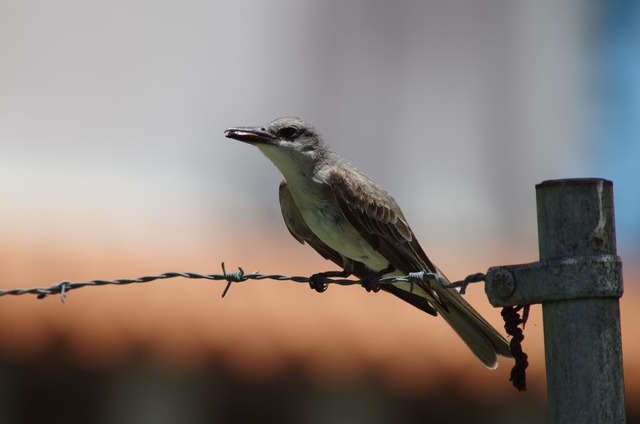
Here I also saw a few families of the very handsome Green Iguana, which is a big and powerful lizard. This family was resting in the shadows next to the golf course.
Needless to say, if you go with your kids to Florida you need to visit Universal Studios. It really is an amazing place. If you have visit this amusement park all others will feel simple (we have visited many big ones in other countries). It is a must if you like this type of parks.
As we left Orlando we drove down to Miami for the cruise ship to the Bahamas. I was surprised to find myself enjoying it so much. I was confident my kids would love it (as they did) but just relaxing with the all inclusive packet was nice for a change. At Grand Bahama I had planned to have a full day of birding and therefor I had contacted a local guide, Erica who took me out. First she showed me a nesting Antillean Nighthawk with chicks which was a good start.
We visited some target spots in town before we drove east towards the pine forests. Here I was hoping to see Bahama Warbler, Olive-capped Warbler. Unfortunatly we only saw the Olive-capped (heard the Bahama singing further into the forest). Very surprising was the sighting of 2 Brown-headed Nuthatches which is a very rare bird here. Erica was very thrilled about it as she had only seen it a couple of times before. We also had good views of a thick-billed vireo before we left.
Close to a very nice beach I was hoping to see the third "New World Warbler" in the Bahama Yellowthroat but it was probably to late in the day and to many people around so we missed it. The beach was lovely though and we had our lunch sandwich here.
We then continued towards town and made our last stop at the botanical garden. Here I saw the beautiful Red-legged Thrush, Cuban Emerald as well as Black-faced Grassquit.
Our trip then continued to Nassau and Great Stirrup Kay. The latter is a private island which is made up to suite tourist. For a day this is very pleasant and I had some decent snorkeling. I saw my first Barracuda as well as some very colorful fishes. At the beach there was a colony of Least Terns and a few Ruddy Turnstones. A couple of Bananaquits were also joining us at the public area.
Over all this was a very pleasant trip which I must recommend if traveling with your family. At the Keys I saw only a few new lifers, Gray Kingbird, Roseate Tern, Shiny Cowbird and White-crowned Pigeon. In the Bahamas a saw a total of 41 species, most of them at Grand Bahama.
Tanzania April 2014
In April this year I made a very nice trip to Tanzania, Kibaha Education Center. I was lucky to be one of two teachers who spent 3 weeks with 10 students from my school. The trip is a part of an exchange program between our schools. We spent a lot of time around the school and some local farmers. We also made one day trips to Bagamoyo, Morogoro and Dar es Salaam. During these days a tried to bird as much as I could at these places. As a final we went 4 days up north and visited Ngorongoro Crater, a local Masai village and some plantations on the slopes of Mt:Meru. At this time of the year it rained a lot (so much as one bridge on the road between Dar es Salaam and Arusha crashed and the trip to Arusha took more than 24 hours). Birding around Kibaha was ok even if I did´t see large amounts. A nice bird I saw many days just next to our hostel was this Striped Kingfisher. At a local fish farm I also saw this beautiful Pin-tailed Whydah.
One day we went to Bagamoyo, which is a city by the coast north of Dar es Salaam. The city used to be the trading centre for the slave trading, so the history is quite violent. As a part of the trip we visited a crocodile farm with some massive African Crocodiles as well as some colonies of weavers, like this Black-headed Weaver. By the sea some terns were resting, like this Lesser Crested Tern with 4 Common Terns and close by a group of stunning N. Carmine Bee-eaters.
An other day we went west to the university town of Morogoro. Here we also visited a local farmer who the university had supported with some vaccination for his animals. In his garden I saw the very handsome Little Bee-eater.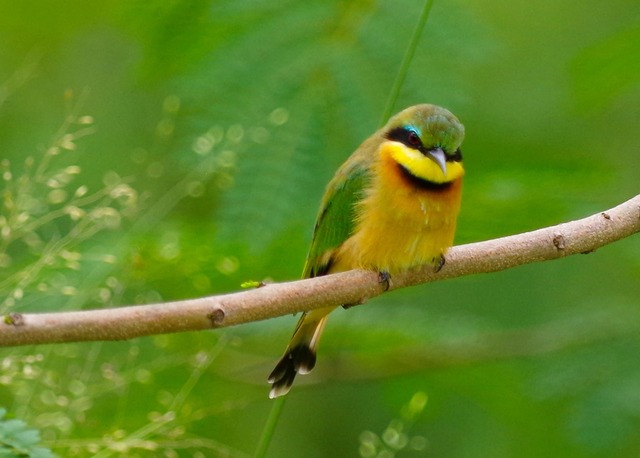
As my students study animal care and nature resources, we also made a trip to the stunning national parks up north. The following pictures are all from a magic day in the Ngorongoro Crater. As we descended down the crater the first bird I saw was this Schawlow´s Wheathear. Soon many of the star mammals were seen. 2 male Lions, family of Common Zebras, many Blue Wildebeests, a family of Spotted Hyenas, several Thomson´s Gazelles and a family of Black-backed Jackals.
In the crater there were of course also lots of great birds like this Kori Bustard and this group of Wattled Starlings.
As we climbed up the other side of the crater a family of Olive Baboons showed some interest of us.
It was a great trip and experience and even it was not a birding trip I managed to see 180 bird species. At the end of my blog from Tanzania 2016 you can see a full report of all birds and animals seen.
Tanzania March 2016
Tanzania 2016 (Kibaha school, Coast near Bagamoyo and also Serengeti).
From late February to the middle of March 2016 I had the privilege to spend some time in Tanzania with my Swedish students in an exchange program. We were staying at Kibaha secondary school 40 km west of Dar es Salaam.This area is not savanna but more of combination of agricultural land and some open bush country, making wildlife including birdlife less frequent both in abundance as in number of species. For 3 weeks we participated in different activities close to the school or as day trips further away. We also made a 4 day trip up north. Working as a teacher I still birded as much as possible and also took photos when possible. In 2014 I made the same trip but at this time later in the season from late March to the middle of April. (See that blog). Below you can see some of the birds and mammals I saw. At "trip reports" you can also find my list of birds/ mammal seen if you are interested as well as all my other trips.
The Lilac-breasted Roller was quite common around Kibaha school and seen most days, preferring open areas. Also common up north. Spending time around Kibaha does not give you the same amount of species as further north but you still get a good chance spot some nice species like this Black-chested Snake-Eagle, Yellow-throated Longclaw and Spectacled Weaver.
At the Kibaha girls school I had excellent views of a family of African Jacanas as well as European Bee-eaters, Palm-nut Vultures and quite surprising a pair of Senegal Lapwings. Here I also saw Eurasian Golden Oriole, Af. Hoopoe, Spotted Flycatcher and several Flappet Larks displaying (remarkable sound). It´s fun to see "swedish" birds when you are in Tanzania.
At two occasions we made study visits near the coast which gave me a few hours for birding. At both times I was lucky to be there while it was low tide. Shorebirds are a very nice group with the combo of classic beauty and challenges to decide species when not in breeding plumages. A favorite of which I saw around 100 was the Crab Plover. However, seeing birds as Terek Sandpiper and March Sandpiper close up really made these hours memorable.
Inland birds seen at these locations included two stunning bee-eaters, White-throated and Blue-cheeked.
During our last 4 days we took the long trip up to the north for Arusha and Serengeti. In Arusha we visited a coffee plantation which was interesting and also a Masaii village on the way towards Serengeti, Serengeti is a magic place and the 1,5 days we spent here is of course not enough if you want to see more than I did. Still a saw many birds and lots of good mammals. On the plains near Lake Manyara there were huge flocks of birds, which of some, I could´t see well enough to tell what species they were. However, spending 1,5 days in Serengeti still gives all your senses so many fantastic memories that it´s hard to pick what you want to describe. We saw many lions, more than 50 and it was interesting to see so many up in the trees. According to our guide it was most likely because of the high presence of Tsetse-flies which are quite unpleasant. These pictures are from two families not far from each other.
Other individuals trying to escape the flies were the Af. Buffaloes and the common Thomson´s Gazelles.
Elephants are so amazing animals. It´s so obvious that they are a family who live together and take care of each other. The small youngsters are always kept in the centre of the group and a few of the bigger individuals feed at a little bit away from the main family group.
The abundance of wildlife is so great and you never need to go far before you reach new unforgettable views, like these: Dik-Dik, Impala, Common Zebra and Masai Giraffe.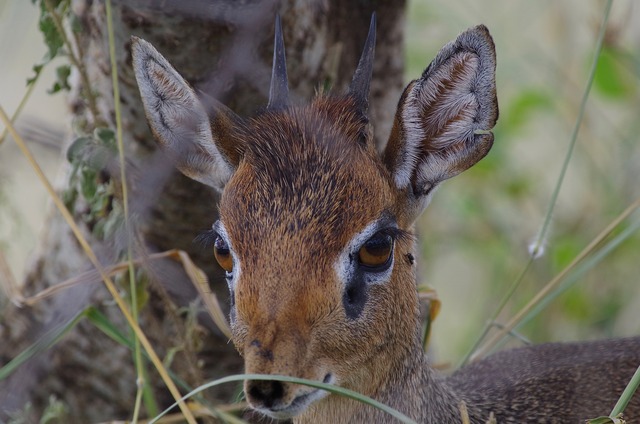
I was lucky to see "all" cats you wish to see. The Serval is quite common but not easy to see. This individual just crossed our track as we passed by and quite quickly disappeared in the high grass. We saw Cheetah at 2 different occasions having the "classic" pose watching the near surroundings. The only Leopard we saw was this lazy one which showed little interested in showing well for good pictures.
Visiting the african savanna means you obviously pay a lot of attention to all the mammals. However, birdlife is plentiful and you will most certainly see birds all the time while slowly driving through. A week just concentrating for birds might give you the chance to really look at all the birds. The following birds are just a few of the fantastic birdlife seen up north. The first 3, Double-banded Courser, Cut-throat Finch and Grey-capped Social Weaver were seen next to the Masai Village we visited.
While waiting for the permit to enter Ngorongoro conservation area (it takes some time to go through the permits) I birded just around the entrance and saw a high amount of species including these: Cinnamon-chested Bee-eater, Red-billed Firefinch and Af. Dusky Flycatcher.
As said before, the savanna is just filled with birds and it´s not easy to chose what to show. A mix of savanna birds are: Pygmy Falcon, Secretary Bird, Usambiro Barbet, Blue-capped Cordon Bleu, Dark Chanting Goshawk, White-bellied Bustard, Silverbird, Black-shouldered Kite and these two females of Chestnut-bellied and Yellow-throated Sandgrouse.
A lioness in Serengeti observing us with great caution and a group escaping the flies.
Compared to the trip I made in 2014 this trip gave more species, maybe because of the weather and time of the year but also as I knew more of what to expect and also visiting some better locations. Below you can see full list of birds/ mammals seen. (N) means northern Tanzania.
First Tanzania 2014 (late March-April)
Birds.
- Common Ostrich. +30 (N).
- Helmeted Guineafowl. +20 (N).
- Crested Guineafowl. 15 in a Flock at Gibb´s Farm.
- White-faced Whistling Duck. 1 single bird Ngorongoro.
- Cape Teal. +10 (N)
- Lesser Flamingo. Aprox. 200 close enough for identification in Ngorongoro. Many thousands further away.
- Yellow-billed Stork. 1 bird (N)
- African Openbill. +50 widespread.
- White Stork. 1 bird (N).
10. Marabou Stork. 1 bird seen flying (N).
11. African sacred Ibis. +20 spread out.
12. Hadada Ibis. 2 birds (N).
13. African Spoonbill. 2 birds (N).
14. Western Cattle Egret. Common in suitable habitat.
15. Black-headed Heron. 1 bird at the coast and 10 birds (N).
16. Purple Heron. One bird in Ngorongoro
17. Great Egret. 2 birds (overlooked).
18. Dimorphic Egret. 2 birds Bagamoyo.
19. Hammerkop. 1 bird Kibaha.
20. Great White pelican. 2 birds at the coast.
21. Secretarybird. 2 birds at nesting tree, Ngorongoro.
22. Black-winged Kite. 3 birds spread out.
23. European Honey Buzzard. 1 bird at Kibaha.
24. White-backed Vulture. +10 Ngorongoro.
25. Black-chested Snake Eagle. 2 single birds in Ngorongoro.
26. Bateleur. 1 single bird Arusha.
27. Booted Eagle. 1 bird outside Arusha.
28. Lizzard Buzzard. 1 bird Bagamoyo.
29. Black Kite. 6 birds Hippo-pool Ngorongoro.
30. Augur Buzzard. 1 single bird in a tree when leaving Ngorongoro.
31. Amur Falcon. More than 50 birds flew over our hostel in Kibaha one evening just before dark.
32. European Hobby. 2 birds Ngorongoro.
33. Lanner Falcon. One bird perched in a tree, Ngorongoro.
34. Kori Bustard. +10 in Ngorongoro.
35. Allen´s Gallinue. I saw one bird at Kibaha far out in a marshy lake. Managed to digiscope it.
36. Pied Avocet. 3 birds (N).
37. Blacksmith Lapwing. + 100 (N).
38. Crowned Lapwing. 3 birds Ngorongoro.
39. Grey Plover. 3 birds Bagamoyo.
40. Common Ringed Plover. 5 at Bagamoyo.
41. White-fronted Plover. 2 at Bagamoyo.
42. Lesser sand Plover. +5 at Bagamoyo.
43. Greater sand Plover. 1 bird at Bagamoyo.
44. Whimbrel. 2 birds at bagamoyo.
45. Common Greeshank. 5 birds at Bagamoyo.
46. Green Sandpiper. 1 bird at Kibaha.
47. Terek Sandpiper. 2 birds at Bagamoyo.
48. Common Sandpiper. 3 at Bagamoyo and 1 Kibaha.
49. Curlew Sandpiper. 3 at Bagamoyo.
50. Grey-headed Gull. + 10 Bagamoyo.
51. Lesser Black-backed Gull. +5 birds Bagamoyo.
52. Caspian Tern. 1 bird Bagamoyo.
53. Greater Crested Tern. +10 Bagamoyo.
54. Saunder´s Tern. +10 Bagamoyo.
55. Common Tern. +20 Bagamoyo.
56. White-winged Tern. 2 at Bagamoyo.
57. Rock Dove. Yes.
58. Mourning Collared Dove. Yes
59. Ring-necked Dove. Yes.
60. Emerald Spotted Wood- Dove. 3 separate birds around Kibaha.
61. Tambourine Dove. 2 birds at Gibb´s Farm.
62. Fisher´s Lovebird. +10 (N).
63. Yellow-collared Lovebird. 3 birds on a roof at “snake farm” (N).
64. Yellow-collared Love Bird. One single bird (N).
65. Brown-headed Parrot. 3 birds at KIbaha.
66. White-bellied Go-away-bird. 1 bird at Kibaha.
67. White-browed Coucal. 2 birds at separated locations.
68. Burchell´s Coucal. Surprisingly I found a pair outside Kibaha.
69. African Palm Swift. Common at a few locations.
70. Little Swift. Common in Morogoro and Arusha.
71. Speckled Mousebird. 1 bird at Kibaha and +10 (N).
72. Lilac-breasted Roller. Quite common and widespread.
73. European Roller. +10 birds around Bagamoyo.
74. Broad-billed Roller. 1 bird outside Kibaha.
75. Grey-headed Kingfisher. 2 birds around Kibaha.
76. Brown-hooded Kingfisher. 2 separated birds outside Kibaha.
77. Striped Kingfisher. 8 different birds spread out.
78. Pied Kingfisher. 1 Kibaha and 2 Bagamoyo.
79. Little Bee-eater. 1 Morogoro and 5 (N).
80. Cinnamon-chested Bee-eater. 8 birds at Gibb´s Farm.
81. White-fronted Bee-eater. 2 single birds outside Arusha.
82. Blue-cheeked Bee-eater. 1 bird Bagamoyo.
83. European Bee-eater. 2 Kibaha and 5 (N).
84. Northern Carmine Bee-eater. 4 beautiful birds outside Bagamoyo.
85. African Hoopoe. 1 bird Ngorongoro.
86. Green Wood Hoopoe. 5 birds Kibaha and 3 (N).
87. Common Scimitarbill. 1 single bird Kibaha.
88. African Grey Hornbill. A family of 4 birds were waking us up every morning, Kibaha.
89. Brown-breasted Barbet. Widespread with a few birds, totally 20 birds.
90. Red-and yellow Barbet. One bird seen from the bus on a termite-mound between Ngorongoro and Arusha.
91. Cardinal Woodpecker. 2 birds Kibaha.
92. African Grey Woodpecker. 2 birds Ngorongoro.
93. Black-crowned Tchagra. One bird Bagamoyo and one bird outside Arusha.
94. Black-backed Puffback. One bird at Flamingo Lodge.
95. Tropical Boubou. Aprox. 10 birds spread out Kibaha and north.
96. Red-backed Shrike. Quite common both around Kibaha and up north.
97. Lesser Grey Shrike. 1 single bird outside Kibaha.
98. Isabelline Shrike. One bird at Ngorongoro.
99. Common Fiscal. +10 birds spread out up north.
- African Golden Oriole. 8-10 birds around Kibaha the first week, them they seemed to disappear as I saw none the second week.
- Fork-tailed Drongo. A pair outside our hostal, Kibaha and quite conspicuous elsewhere.
- African Paradise Flycatcher. 2 beautiful males at our lodge in Karatu.
- White-tailed Blue Flycatcher. 2 nice birds at Gibb´s Farm.
- House Crow. Common, especially around Kibaha and the coast.
- Pied Crow. The opposite of its relative. More common in the north.
- Red-capped Lark. 10+ up north.
- Fisher´s Sparrow-Lark. 4 just as we came down to the crater.
- Common Bulbul. Yes, common around Kibaha.
- Mountain Greenbul. 3 birds near Gibb´s farm.
- Lowland Tiny Greenbul. 2 birds showed well in a garden-like place just outside Kibaha.
- Black-Saw-wing. Common near Gibb´s Farm.
- Barn Swallow. About 15 birds, mostly north.
- Wire-tailed Swallow. About 10 birds, mostly north.
- Lesser Striped Swallow. Nesting area at Kibaha School and a few more throughout.
- Mosque Swallow. Aprox. 10 birds up north.
- Red-faced Cisticola. A pair showed well at Gibb´s Farm.
- Singing Cisticola. 1single bird Kibaha.
- Tawny-flanked Prinia. 1 bird Kibaha School and 1 up north.
- Grey-capped Warbler. A pair was seen “Elephant Cave”.
- Grey-backed Camaroptera. 1 bird Kibaha and 2 birds up north.
- Mountain White-eye. Totally 3 birds Gibb´s Farm.
- Wattled Starling. 15+ Ngorongoro.
- Black-bellied Starling. One bird at a cow farm, Kibaha.
- Superb Starling. 2 birds Ngorongoro.
- Hildebrandt´s Starling. 20+ Ngorongoro.
- Red-winged Starling. 5 birds in Arusha.
- Red-billed Oxpecker. 3 birds on gazelles, Ngorongoro.
- Spotted Ground Thrush. One bird in the garden at our lodge in Karatu.
- White-starred Robin. We flushed about 8 birds in Ngorongoro and Mt:Meru realizing it is quite common, but never stopped until it disappeared in to the forest.
- Rüppell´s Robin Chat. 1 bird seen well high up and in dense jungle next to Gibb´s Farm.
- White-browed Robin Chat. 2 birds in the garden at Flamingo Lodge, Karatu.
- (African) Stonechat (race axilaris) Common at the slopes of Mt:Meru
- Schalow´s Wheatear. 3 in Ngorongoro.
- Capped Wheatear. 1 bird in Ngorongoro.
- Anteater Chat. A pair just as we had descended the crater.
- White-eyed Slaty Flycatcher. 2-3 birds at the slopes of Gibb´s farm.
- Pale Flycatcher. A few birds seen around Kibaha and villages around.
- African Grey Flycatcher. A pair outside Gibb´s farm.
- Spotted Flycatcher. +10 birds seen throughout.
- Black-throated Wattle-eye. 1 bird outside Bagamoyo.
- Collared Sunbird. Quite common.
- Amethyst Sunbird. 1- 2 birdsin the garden of Flamingo Lodge.
- Eastern- Double-collared Sunbird. 1 bird at Gibb´s farm and 1 at the slopes of Mt:Meru.
- Purple-banded Sunbird. 3-4 birds seen around Kibaha.
- Variable Sunbird. +10 birds seen at different places.
- Rufous-tailed Weaver. 8-10 birds at Hippo pool, Ngorongoro.
- House Sparrow. Yes.
- Northern Grey-headed Sparrow. A pair outside Kibaha.
- White-headed Buffalo-Weaver. 2 single birds up north.
- Eastern Golden Weaver. +20 at a small village outside Kibaha.
- Holub´s Golden Weaver. A pair at “Elephant Cave”.
- Lesser Masked Weaver. Seen at 3 different colonies.
- Viteline Masked Weaver.
- Village Weaver. 50+ at 3 different colonies.
- Red-billed Quelea. 1 bird in breeding plumage outside Ngorongoro. Hundreds of birds in “brown-bird-flocks” which I had not time to concentrate on.
- Yellow-crowned Bishop. 2 birds seen on our way up north.
- Black Bishop. 1 bird close to Flamingo Lodge.
- Zanzibar Bishop. Spread out around Kibaha, totally 9-10 birds.
- Yellow Bishop. 2 separate birdsseen around Kibaha.
- White-winged Widowbird. One bird in the reeds at fishing lake, Morogoro.
- Green-winged Pytilia. One single bird at a garden in a town between Kibaha and Dar es Saalam
- Abyssinian Crimsonwing. Two nice birds at Gibb´s farm.
- Grey-headed Negrofinch. 1 beautiful bird at “Elephant Cave”.
- Southern Cordon-bleu. Quite common around Kibaha.
- Red-cheeked Cordon-bleu. A few birds up north.
- Purple Grenadier. One bird outside Kibaha and one at Gibb´s Farm.
- Yellow-bellied Waxbill. A pair next to Gibb´s Farm.
- Crimson-rumped Waxbill. A pair at Flamingo Lodge.
- Common Waxbill. A pair at Kibaha School.
- Village Indigobird. 2 separate birds outside Kibaha.
- Pin-tailed Whydah. Totally 6 birds at different locations outside Kibaha.
- Straw-tailed Whydah. 1 single bird just outside Flamingo Lodge.
- Long-tailed Paradise Whydah. One stunning bird at the cow farm outside Kibaha.
- Mountain Wagtail. One bird at “Elephant cage”.
- African Pied Wagtail. A few birds throughout.
- Yellow-throated Longclaw. One bird Kibaha and one at Ngorongoro.
- African Pipit. 3 birds at Kibaha School.
- Western Citril. 1 single bird high up om Mt:Meru.
- Yellow-fronted canary. 2 birds outside Bagamoyo.
- Thick-billed Seedeater. Quite common at Gibb´s Farm and Mt:Meru.
Mammals at Ngorongoro. (All mammals except Vervet monkey was seen Ngorongoro Conservation Area.
- Olive Baboon. Common.
- Vervet Monkey. A family around Kibaha.
- Black-backed Jackal. +10
- Spotted Hyena. A family of 8.
- Lion. 3 males and 1 female.
- Af Elephant. Common.
- Common Zebra. Common.
- Black Rhinoceros. 2 quite close.
- Hippopotamus. Large family at hippo pool.
10. Common Warthog. Common.
11. Giraffe. 3 seen on the fields outside Lake Manyara N.P.
12. Af. Buffalo. Common.
13. Eland. A few.
14. Thomson´s Gazelle. Quite common.
15. Grant´s Gazelle. Quite common.
16. Hartebeest. Just a few seen.
17. Blue Wildebeest. Common.
Tanzania 2016. (Feb-March)
2 years later I did the same trip for three weeks, though with some different aspects of the itinerary. This time we went to the Serengeti and did a open camp experience at Seonera. Serengeti is a huge place and quite different to Ngorongoro. In Ngorongoro you have animals around you all the time but in Serengeti you can drive for quite some time before coming up to the animals. We drove into the Southern Corridor, as the big herds of Wildebeests should be here at this time. Surprisingly we did not see that many so they must have moved on somewhere else. This time we also visited the coast twice, Bagamoyo (1km south of “Stone town/ oid fort) and just north of Dar es Salaam at White-sands hotel (in the bird list I will refer to B and WS concerning the birds seen next to the sea). We did not go to Morogoro. Around Kibaha the birds were not exactly the same as previous trip, probably because of a month and a half earlier this time. Up in the north the abundance of birds were incredible. If I haven´t been travelling with my students I had stop so many times that the trip to Serengeti would have been the time doubled. The species highlight were the close encounter of the amazing Crab Plover both seen at Bagamoyo and south of Dar es Salaam.
- Common Ostrich. Quite common
- Helmeted Guineafowl. +100
- Coqui Francolin. About 8 birds in 2 families.
- Crested Francolin. A family of 4.
- Yellow-necked Spurfowl. A family of 4-5.
- Harlequin Quail. One male flushed and gave good enough views.
- White-faced Whistling Duck. 2 birds in a small pond close to camp.
- Egyptian Goose. 20+
- Cape Teal. 4 in a lake.
- Yellow-billed Stork. 3 birds in total.
- Abdim´s Stork. Widespread, more than 1000 seen.
- Wolly-necked Stork. 2 birds got my attention from the “usual stork jizz” for this trip.
- White Stork. Huge flocks seen, a guess would be +2000.
- Marabou Stork. +50.
- African sacred Ibis. Just a few.
- African Spoonbill. Just one bird.
- Striated Heron. One bird at Bagamoyo.
- Western Cattle Egret. Common in suitable habitat.
- Grey Heron. A few seen through out.
- Purple Heron. One bird in Ngorongoro
- Great Egret. A few (overlooked).
- Little Egret. A total of 5 birds.
- Hammerkop. 8 birds at a few spots.
- Long-tailed Cormorant. 5 birds at the coast.
- Secretarybird. 2 birds in Serengeti.
- Black-winged Kite. A few.
- Palm-nut Vulture. A pair at nest Kibaha.
- European Honey Buzzard. More common around Kibaha this year, +10 seen.
- White-backed Vulture. 4 for sure, many vultures not counted.
- Lapped-faced Vulture. 2 beautiful birds close in a tree and 4 more soaring.
- Black-chested Snake Eagle. Excellent views of one bird at Kibaha.
- Bateleur. 1 single bird.
- Tawny Eagle. At least 5 birds in Serengeti.
- (Lizzard Buzzard. 1 captured bird in a cage at a farm outside Kibaha)
- Gabar Goshawk. 1 single bird Serengeti.
- Dark-chanting Goshawk. 2 birds perched on a cliff in Serengeti.
- Montague´s Harrier. Surprisingly common in Serengeti. More than 30 birds seen.
- Black Kite. Not uncommon.
- Af. Fish Eagle. One single bird at a top of a tree in Serengeti.
- Augur Buzzard. 1 single bird on the roadside towards the parks.
- Common Kestrel. Common.
- Greater Kestrel. One bird seen well in Serengeti. First on the ground and then flying.
- Kori Bustard. About 8 in Serengeti.
- White-bellied Bustard. 3 in a family seen well close to the car, Serengeti.
- Black Crake. Seen with single birds at three different stops.
- Spotted Thick-knee. 4 birds in Serengeti.
- Eurasian Oystercatcher. 10 birds at WS.
- Crab Plover. 80 at B and 8 more at WS. Just Great, what a bird.
- Black-winged Stilt. Not uncommon.
- Blacksmith Lapwing. + 20, Serengeti.
- Spur-winged Plover. 4 near our camp.
- Senegal Lapwing. To my surprise I saw a pair at Kibaha Girl school.
- Crowned Lapwing. Common Serengeti.
- Grey Plover. +20 B, +40 WS.
- Common Ringed Plover. Common at B and WS.
- Three-banded Plover. 3 single birds in Serengeti.
- White-fronted Plover. 3 at B.
- Lesser sand Plover. 3 identified at B and10 more at WS.
- Greater sand Plover. 30 at B and 10 at WS. Aprox. +200 unidentified sand plovers were also seen at these locations.
- Af. Jacana. 3 nice birds at a small dam, Kibaha Girls School.
- Bar-tailed Godwit. 2 birds at Bagamoyo
- Whimbrel.. 3 at B and 4 at WS.
- Marsh Sandpiper. At least 2 birds identified at B.
- Common Greenshank. About 20 at B and a few at WS.
- Green Sandpiper. 1 bird at Kibaha.
- Terek Sandpiper. 4 birds at B and 10 at WS..
- Common Sandpiper. 1 at B and 5 at WS.
- Red Knot. 2 at B.
- Curlew Sandpiper. 5 at B.
- Ruff. +10 at B.
- Double-banded Courser. A true trip highlight. About 10 birds at 3 different spots Serengeti and also just outside Mto wa Mbu.
- Black-headed Gull. 2 at WS.
- Sooty Gull. 2 at fishmarket in Dar es Salaam and 20 birds at WS.
- Lesser Black-backed Gull. 4 birds B.
- Gull-billed Tern. 1 at the fish market.
- Caspian Tern. 4 birds at B.
- Greater Crested Tern. 3 at B
- Lesser Crested Tern +100 at B.
- Saunder´s Tern. 3 at B and 15 at WS.
- Common Tern. 2 at B and 2 more at WS.
- Yellow-throated Sandgrouse. A family of 10 in the south corridor.
- Black-faced Sandgrouse. A family of 4 not far from the others.
- Rock Dove. Yes.
- Speckled Pigeon. 1 single bird at Serengeti.
- Af. Olive Pigeon. A pair at Serengeti.
- Mourning Collared Dove. Yes
- Ring-necked Dove. Yes.
- Laughing Dove. About 5 seen.
- Emerald Spotted Wood- Dove. 3 separate birds around Kibaha.
- Namaqua Dove. About 10 birds at a few locations.
- Fisher´s Lovebird. +10 .
- Brown Parrot. A pair at Serengeti.
- Brown-headed Parrot. 4 birds at Kibaha.
- Grey Go-away-bird. 1 bird in Serengeti.
- White-browed Coucal. 1 bird at Kibaha.
- Diedrik Cuckoo. A pair at Naabi gate.
- Böhm´s Spinetail. 2 single birds at Kibaha.
- African Palm Swift. Quite common at a few locations.
- Common Swift. About 10 in total around Serengeti.
- Little Swift. Only 2 in Arusha.
- Speckled Mousebird. +40 Around Serengeti.
- Lilac-breasted Roller. Quite common and widespread.
- European Roller. 2 birds at Bagamoyo.
- Grey-headed Kingfisher. 2 single birds around Kibaha.
- Striped Kingfisher. About 3 around Kibaha.
- Mangrove Kingfisher. 1 at B.
- Pied Kingfisher. 3 at B and I at WS.
- Little Bee-eater. Seen with a few both Kibaha and Serengeti.
- Cinnamon-chested Bee-eater. 1 at Ngorongoro gate.
- White-throated Bee-eater. 4 near W.S
- Blue-cheeked Bee-eater. 2 at B and 3 more little bit further inland.
- European Bee-eater. About 5 Kibaha and a few more around B.
- Northern Carmine Bee-eater. 25 beautiful birds outside Bagamoyo. Wow, what a sight.
- African Hoopoe. 1 bird Serengeti.
- Green Wood Hoopoe. 2 groups of total 8 birds around Kibaha.
- African Grey Hornbill. A total of 15 birds around Kibaha.
- Von der Decken´s Hornbill. One single bird at hippo-pool in Serengeti.
- Yellow-fronted Tinkerbird. 1 single bird just outside Kibaha.
- White-headed Barbet. 2 from roadside on the way towards the parks.
- Brown-breasted Barbet. Not as common as previous year, just a few seen.
- Usambiro Barbet. A pair had their daily breakfast at our camp.
- Chinspot Batis. A pair at our camp.
- Black-crowned Tchagra. Just one at Kibaha.
- Tropical Boubou. Aprox. 8-10 birds spread out Kibaha and north.
- Brubru. One at Serengeti.
- Long-tailed Fiscal. 3 along the road towards the parks.
- Grey-backed Fiscal. 2 up north.
- Taita Fiscal. A few up north.
- Common Fiscal. Common.
- Eurasian Golden Oriole. 2 birds around Kibaha girls school showed well and gave me the beautiful voice I sometimes hear in Sweden.
- Square-tailed Drongo. Just one seen close to Bagamoyo.
- Fork-tailed Drongo. A pair outside our hostel, Kibaha and quite conspicuous elsewhere.
- House Crow. Common, especially around Kibaha and the coast.
- Pied Crow. The opposite of its relative. More common in the north.
- Cape Rook. 2 seen well in Serengeti.
- White-necked Raven. 3 of them up north.
- Red-throated Tit. A pair showed well at the toilet at Naani Gate.
- Flappet Lark. 3-4 of them at Kibaha Girls school. What amazing sound they perform.
- Red-capped Lark. None, probably overlooked.
- Fisher´s Sparrow-Lark. A few seen.
- Common Bulbul. Yes, common around Kibaha.
- Mountain Greenbul. 2 close to Ngorongoro gate.
- Yellow-bellied Greenbul. One bird at Kibaha.
- Black-Saw-wing. 6 around Ngorongoro gate.
- Barn Swallow. Quite common.
- Angola Swallow. When I saw these 2 birds I felt confused as something in the jizz said they weren´t Barn Swallows. I then saw that there is a population of these in the Kibaha area which gave me the idea the should be Angola.
- Wire-tailed Swallow. About 10 birds, mostly north.
- Lesser Striped Swallow. Nesting area at Kibaha School and a few more throughout.
- Mosque Swallow. Aprox.4 birds up north + a pair at Kibaha
- Red-rumped Swallow. 10 of these beautiful birds up north.
- Willow Warbler. One showed well at Ngorongoro gate.
- Tawny-flanked Prinia. 2 birds Kibaha School.
- Grey-backed Camaroptera. 2 birds around camp.
- Yellow-bellied Eremomela. 2 at Serengeti.
- Mountain White-eye. A small party at Ngorongoro gate.
- Banded Parisoma. One seen at a “resting area” Serengeti.
- Wattled Starling. A few in Serengeti
- Black-bellied Starling. 2 birds at a cow farm, Kibaha.
- Gr. Blue-eared Starling. 3-4 up north.
- Ruppell´s Starling. A few up north.
- Superb Starling. Common up north
- Hildebrandt´s Starling. Common up north.
- Yellow-billed Oxpecker. +20 on a big herd of buffaloes.
- White-browed Robin Chat. 1 bird in a garden close to WS.
- (African) Stonechat (race axilaris) Just 2 this trip.
- Capped Wheatear. +10 bird Serengeti.
- C. Rock Thrush. One seen well on a telephone line somewhere on the highway towards Arusha.
- Pale Flycatcher. A single bird at Ngorongoro gate.
- Spotted Flycatcher. +10 birds seen throughout.
- Silverbird. About 10 seen throughout Serengeti.
- Collared Sunbird. Just one this time.
- Scarlet-chested Sunbird. About 4-6 seen around Kibaha.
- Beautiful Sunbird. 3 seen in Serengeti.
- Variable Sunbird. Just afew this year..
- Rufous-tailed Weaver. Quite common Serengeti and also by the road towards the parks.
- Grey-capped Social Weaver. Quite common Serengeti.
- House Sparrow. Yes.
- Northern Grey-headed Sparrow. A couple up north.
- S. Grey-headed Sparrow. A family of four close to Kibaha.
- Red-billed Buffalo Weaver. About 10 at different spots.
- White-headed Buffalo-Weaver. Common up north.
- Lesser Masked Weaver. Just 2.
- Black-headed Weaver. Seen at a few colonies.
- Red-billed Quelea. More easily identified this time. Seen at several spots.
- Yellow-crowned Bishop. 3 birds seen up north.
- Zanzibar Bishop. Spread out around Kibaha, totally 4-6 birds.
- S. Red Bishop. One seen up north.
- Yellow Bishop. Just 1 around Kibaha.
- Jackson´s Widowbird. 2 males seen by the road between the Masaii-villages and the start of the southern corridor.
- Red-billed Firefinch. 2 at Kibaha and 2 more at Ngorongoro gate.
- Southern Cordon-bleu. Quite common around Kibaha.
- Red-cheeked Cordon-bleu. A few birds up north.
- Blue-capped Cordon-bleu. +10 Serengeti area.
- Purple Grenadier. About 5 seen up north.
- Bronze Mannikin. Seen at Kibaha girls school.
- Black and white Mannikin. A family of 4 close to Kibaha.
- Village Indigobird. 1 at cow-farm, Kibaha.
- Pin-tailed Whydah. Totally 3 birds at different locations outside Kibaha.
- Long-tailed Paradise Whydah. One stunning bird at the cow farm outside Kibaha, again.
- African Pied Wagtail. A few birds throughout.
- Yellow-throated Longclaw. 2 birds at Kibaha.
- Pangani Longclaw. One juv seen close to camp in Serengeti. As it´s not on the range map in my field guide I had to contact East Af. Ornitologicals to sort it out.
- African Pipit. +10 different spots.
- Long-billed Pipit. Many pipits were seen up north, a few identified as this species
- Plain-backed Pipit. As above.
- S. (East af.) Citril. (hyposticus) 3 seen at Naani gate.
- Yellow-crowned Canary. +10 up north.
- Golden-breasted Bunting. 1 at our camp, Serengeti.
Mammals and others at Serengeti. (All mammals except Vervet monkey was seen in the Serengeti Area.
1. Olive Baboon. Common.
2. Vervet Monkey. A family around Kibaha.
3. Black-backed Jackal. +10
4. Spotted Hyena. A few.
5. Lion. More than 30 individuals were seen, just great.
6. Cheetah. 3 individuals at 2 different spots.
7. Serval. One just past the road in front of us in the southern part.
8. Af Elephant. Common +200
9. Common Zebra. Common.
10. Hippopotamus. Lot of them at the hippo pool and a few more at small ponds.
11. Common Warthog. Not so many
12. Giraffe. Common.
13. Af. Buffalo. Common.
14. Eland. A few.
15. Impala. Common.
16. Thomson´s Gazelle.Ccmmon.
17. Grant´s Gazelle. Common.
18. Dik-Dik. About 4 individuals seen at different spots.
19. Topi. One family seen close to camp.
20. Hartebeest. Just a few seen.
21. Blue Wildebeest. Common.
22. Af. Crocodile. About 6-7 seen (2 big ones)

